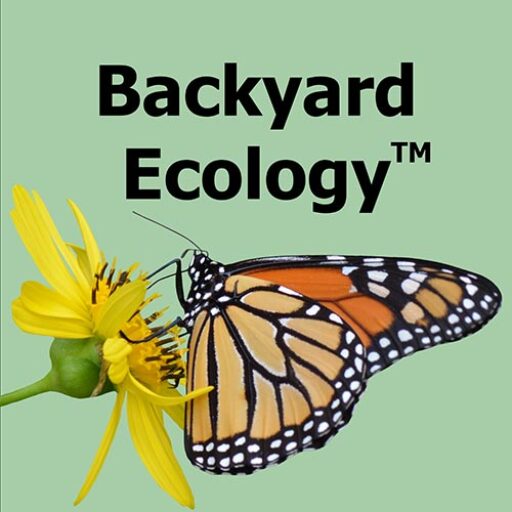Tag: Native plant
-
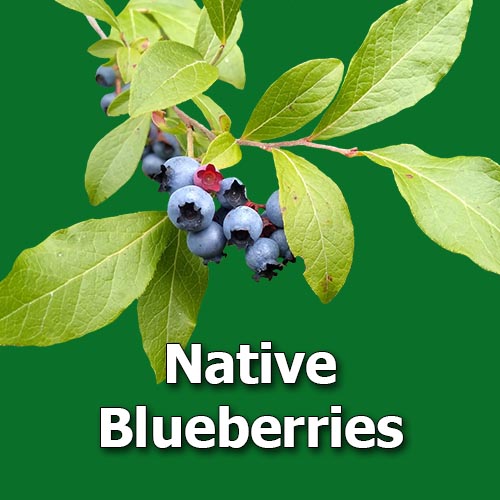
9 Native Blueberries You Can Grow in the Home Landscape
Learn about 9 native blueberries that are native to at least some part of the eastern U.S. and can be purchased from native plant nurseries.
-
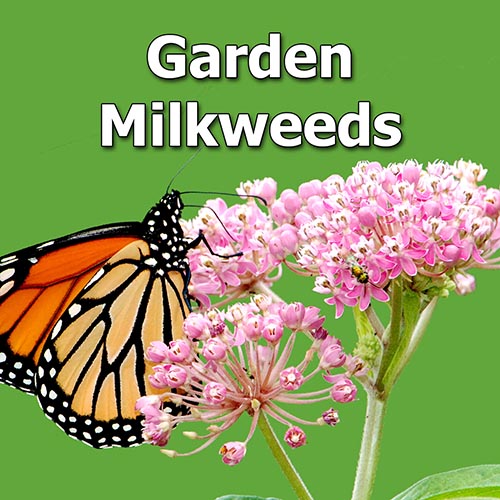
Choose the Best Native Milkweed for Your Eastern U.S. Garden
Learn about 10 species of milkweed that are native to most of the eastern U.S., pros and cons of using them in your home garden, and responsible ways to obtain them.
-
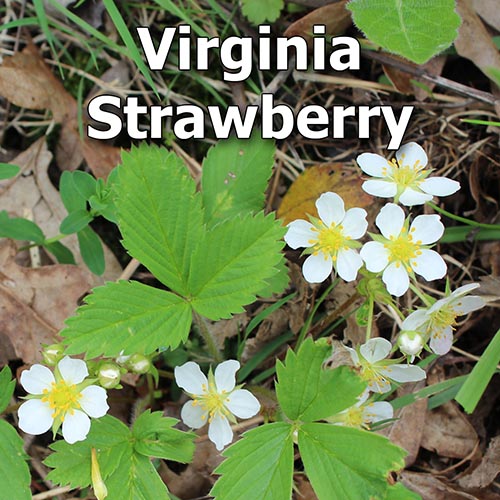
Virginia Strawberry: A Beautiful, Tasty, Underutilized Native Groundcover
Virginia strawberry (Fragaria virginiana) is a beautiful, native groundcover that produces yummy berries and supports a wide range of pollinators and wildlife.
-
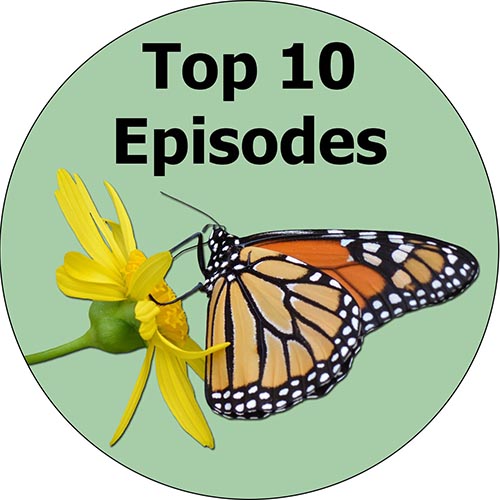
Top 10 Backyard Ecology Podcast Episodes: October 1, 2022 – October 1, 2023
We review the top 10 Backyard Ecology podcast episodes published between Oct. 1, 2022 and Oct. 1, 2023 based on the number of downloads.
-
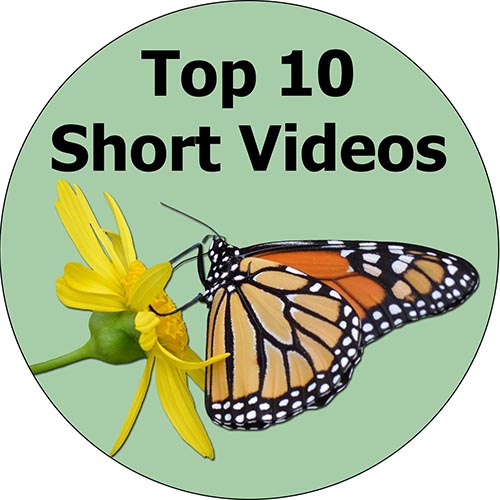
Top 10 Backyard Ecology “Shorts”
The Backyard Ecology YouTube channel was started in the spring of 2022. We review the top 10 shorts on that channel as of Thanksgiving 2023.
-
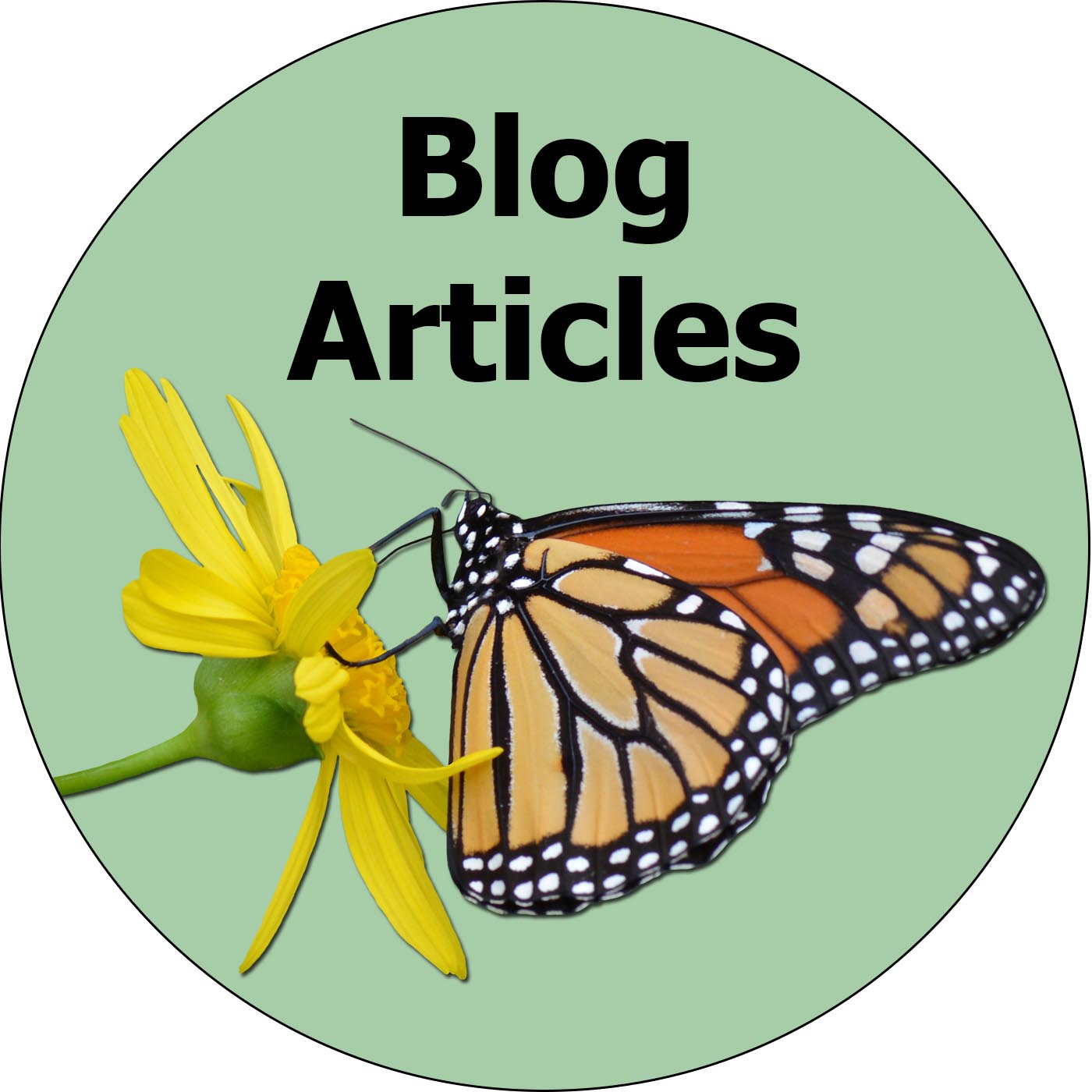
Top 10 Backyard Ecology Blog Articles: October 2022 – October 2023
in BlogA review of the top 10 Backyard Ecology blog articles published between October 2022 and October 2023 plus a bonus of the most viewed article of all time.
-
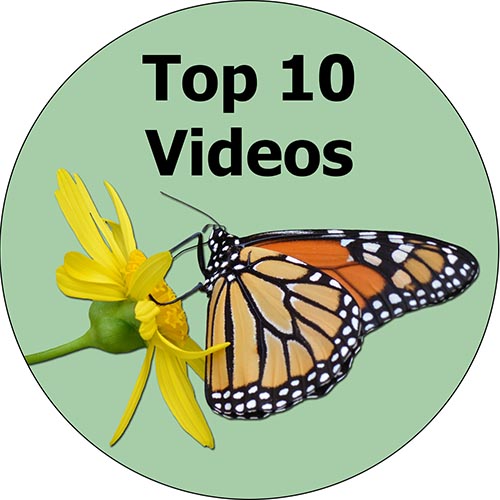
Top 10 Backyard Ecology Videos
The Backyard Ecology YouTube channel was started in the spring of 2022. We review the top 10 videos on that channel as of Thanksgiving 2023.
-
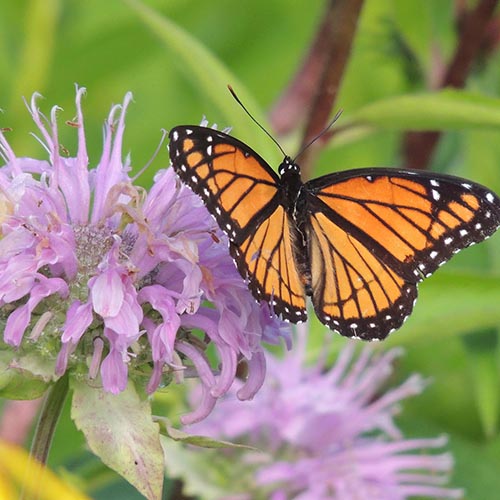
Tips and Tricks for Growing Prairie Plants in Your Native Plant Garden
in PodcastShannon Trimboli, Neil Diboll, and Hilary Cox discuss growing native plants in garden settings and the new book, The Gardener’s Guide to Prairie Plants.
-
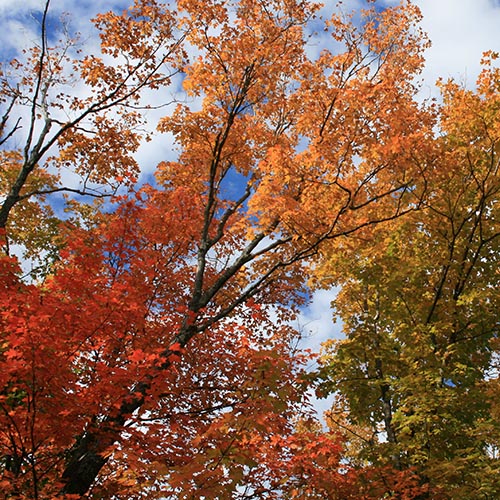
Fall Cleanup in the Pollinator and Wildlife Garden: A Comprehensive Guide to What You Need to Know and Do
When gardening with native plants for pollinators and wildlife, the traditional fall cleanup of the garden is not only unnecessary but could be detrimental.
-
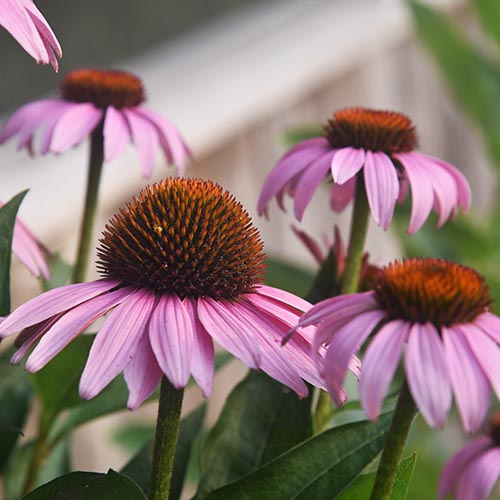
Resharing Your Favorites: Gardening with Native Plants
In this Backyard Ecology episode we talk with Jennifer Ceska from the Georgia State Botanical Garden at UGA about gardening with native plants and much more.
-
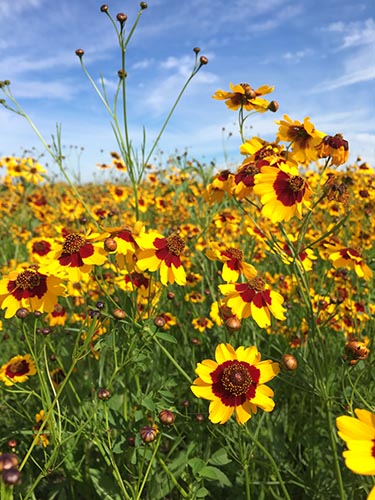
The Secret to Building a Thriving Backyard Ecosystem: Embracing “It Depends”
The secret to building a thriving ecosystem in your yard or community is to understand and embrace the concept of “it depends.”
-

The American Goldfinch: A Comprehensive Guide
I remember Dad hanging our first tube feeder on the front porch. He filled it from a special bag of seed, not the sunflower seeds that we fed to all the other birds that came to our feeders during the winter. These were much smaller and elongated – “thistle seeds” he called them. I silently…
-
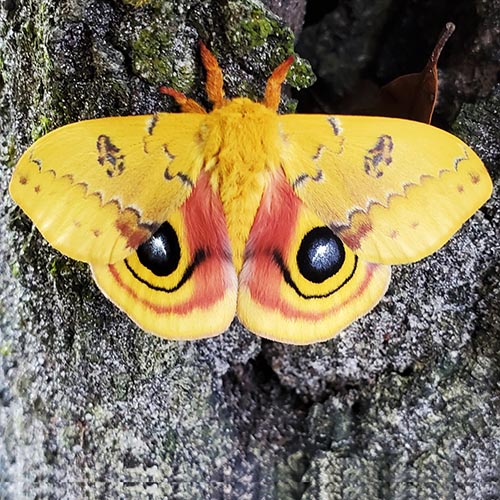
Moths: Unsung Heroes of Pollination and Beyond
in PodcastDid you know that there are approximately 10 times more moth species worldwide than there are butterfly species? Or that without moths we would have fewer songbirds, less genetic diversity in many of our native plants, and lower harvests of many popular fruits? Or that creating better moth habitats around our homes also benefits our…
-
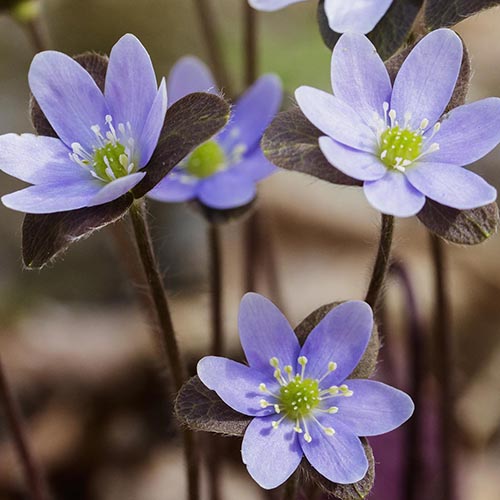
Learning to See and Identify Plants with Alan Weakley
in PodcastNavigation Menu Audio Links Episode links: * Amazon links are affiliate links. Backyard Ecology links: Full Transcript Intro: If you’ve ever found a plant that you didn’t recognize and wanted to know what it was, then this episode is for you. We talk about learning to observe plants, how to identify plants, why that’s important,…
-
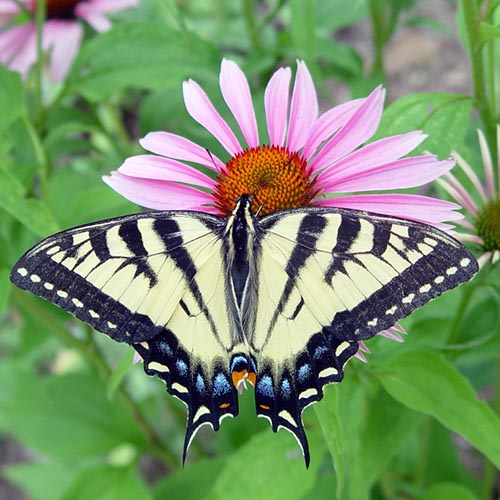
5 Tips for Attracting Butterflies to Your Yard
If you are interested in attracting butterflies to your yard, then you aren’t alone. Many people dream of having lots of beautiful butterflies flitting across their property. To accomplish your dream of attracting butterflies, you may be thinking about planting a butterfly garden or you may have already planted one. Butterfly gardens are extremely popular…
-
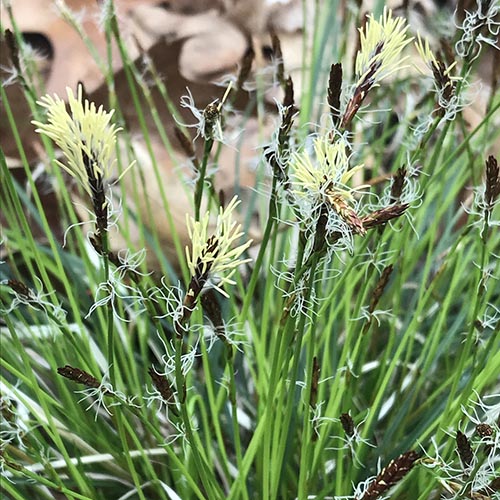
Gardening with Sedges – Mt. Cuba Center Carex Trial
in PodcastDid you know there is a group of native plants which can be highly adaptable, can serve multiple functions in our gardens, and perhaps even be a backbone component to our home landscapes, but which has historically been overlooked for those purposes? This group of native plants is the sedges, or more specifically, members of…
-
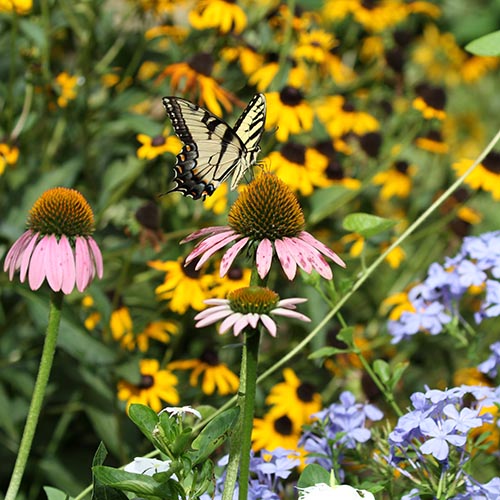
Why Are Some Native Plants Unavailable Early in the Season?
As spring starts to roll around, the garden centers, greenhouses, and nurseries fill up with seeds, bulbs, and pots of brightly colored plants in full bloom. It’s a scenario that plays out every year in just about every town or city. At the same time, the weather is warming up and everyone is getting the…
-
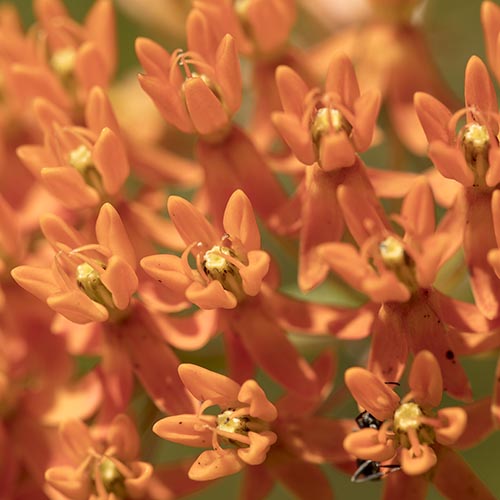
How Can Your State’s Native Plant Society Help You?
in PodcastDo you want to start growing native plants in your yard, but don’t know where to find them? Or maybe you aren’t even sure what a native plant is for your area. Or maybe you are in a situation where you can’t plant anything right now, but you still want to learn about native plants…
-
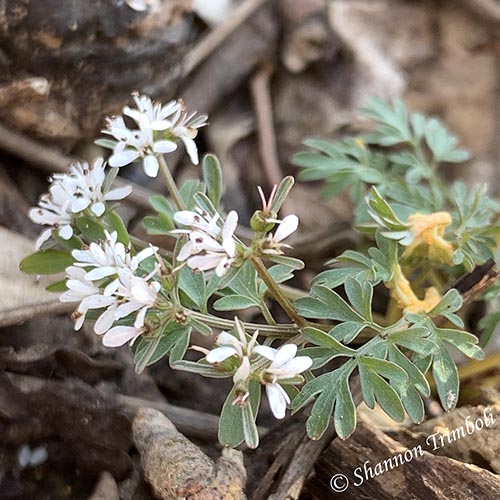
Recent Nature-related Discoveries in My Yard and Community – February and March 2023
This past February and March were quite eventful and packed full of nature-related discoveries and observations. For starters, it seemed like many of the late winter blooming trees and early ephemeral wildflowers bloomed a little on the early side. Then, at least where I’m at, March’s weather was insane with a couple of major windstorms.…
-
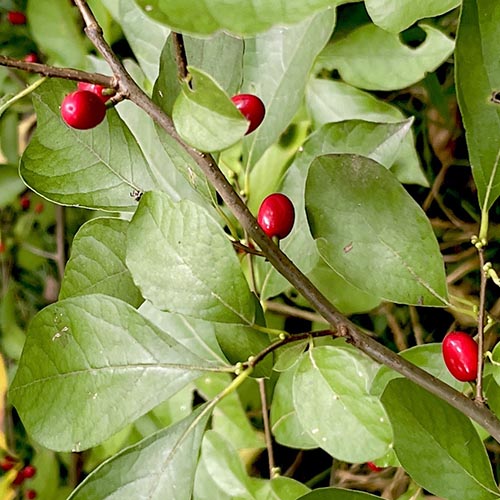
Spicebush – A Native Shrub with Plenty to Like
By: Anthony Trimboli When we think of native shrubs that have four season interest the hollies often come to mind. Their bright red berries, spring bloom and foliage are all hard to beat when it comes to looking good in the landscape. But there is another alternative to the hollies that has many of the…
-
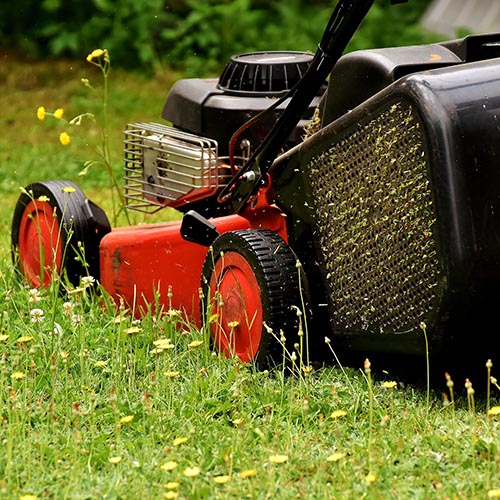
Battery Powered Lawn Care Equipment and Ecological Lawn Care
in PodcastLawn care probably isn’t the first thing you think of when you think about backyard ecology. Honestly, it isn’t for me either. But it is something that most of us have to deal with in one way or another whether we do it ourselves or hire someone to do it for us. And I don’t…
-
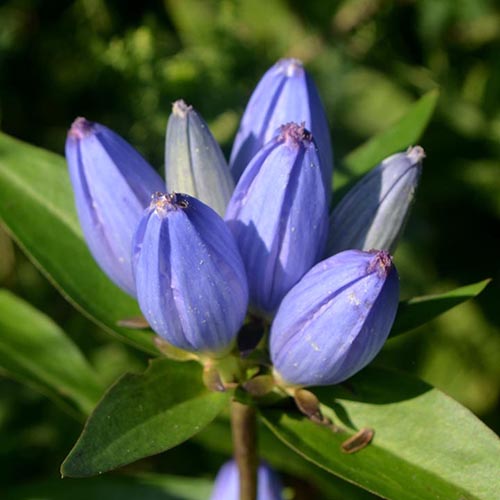
Growing Native Plants, Insect-Plant Interactions, Playing in the Pond, and Much More with Dr. Randi Eckel
in PodcastYou know how sometimes you’ll meet someone and things just “click?” You quickly discover that you have lots of shared interests and experiences and your conversation just flows as it goes down one path and then the next. Well, that’s exactly what happened in this episode as I talked with Dr. Randi Eckel. Randi is…
-
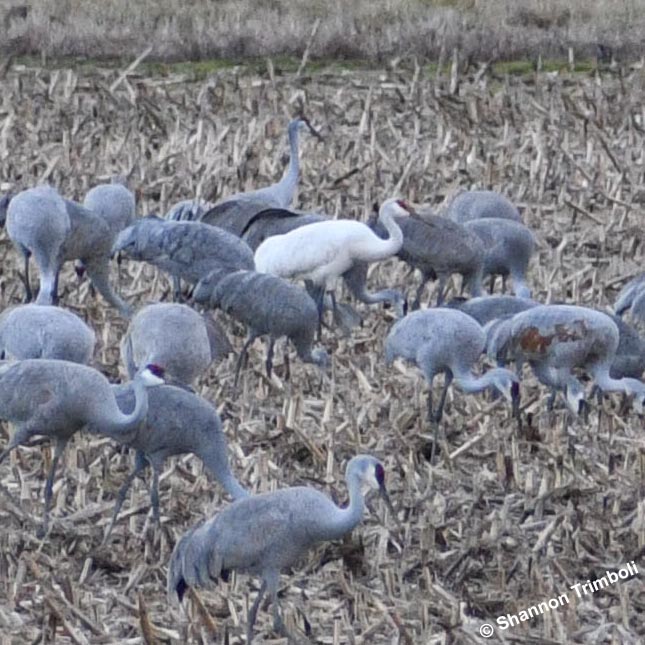
Recent Nature-related Discoveries in My Yard and Community – December 2022 and January 2023
I hope you had an amazing holiday season and your new year is off to a wonderful start. I also hope that over the last couple of months you were able to make some time to get outside, relax, and enjoy some of the nature surrounding you. Below are a few of the nature-related discoveries…
-
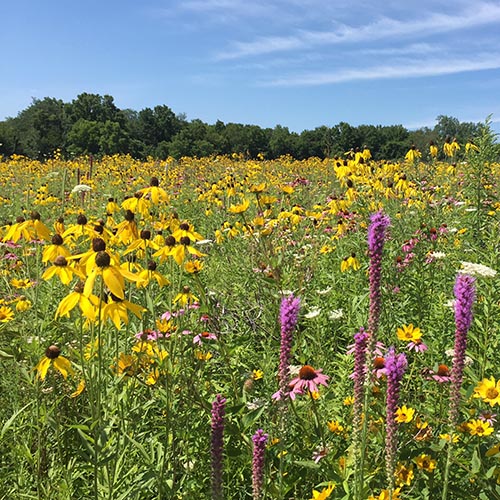
Wildflower vs Native Plant: What’s the Difference?
Browse seed catalogs or walk into almost any big box store’s garden center and there is a good chance that you’ll find one or more seed mixes for sale that are labeled as “wildflower blends.” Some are even marketed as good for pollinator gardens. But just because something is a wildflower doesn’t mean it is…
-
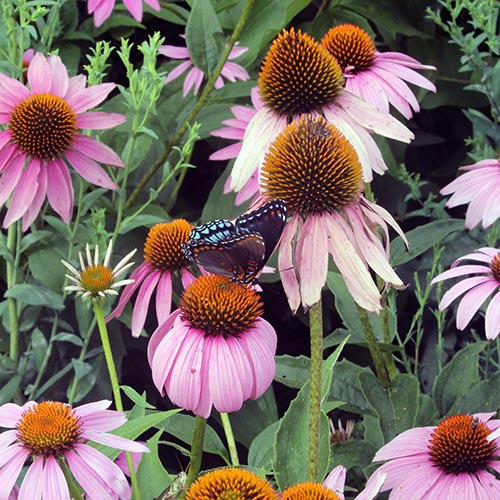
Ecology Based Landscaping with Larry Weaner
in PodcastDo you want your yard to benefit nature, while also being a place that speaks to you and is somewhere you enjoy spending time? Would you love for your yard to also be a place your neighbors admire and that inspires them to create pollinator and wildlife friendly landscapes? In this episode of the Backyard…
-
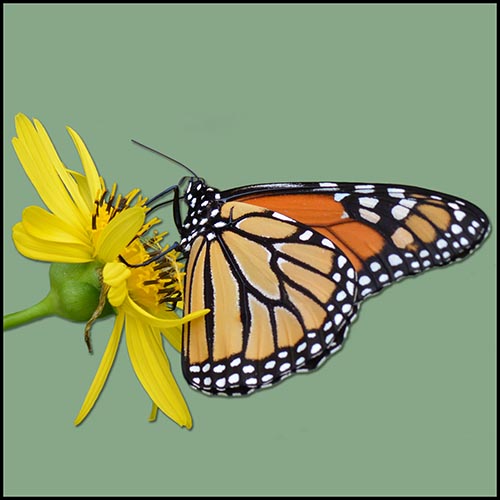
Top 10 Most Popular Backyard Ecology Articles: Thanksgiving 2021 – Thanksgiving 2022
The new year is only a few days away. As I said in last week’s podcast episode, this is traditionally a time for looking back over the last year and looking forward to the new year. We’ve been following that tradition in the Backyard Ecology world, both with our content and behind the scenes as…
-
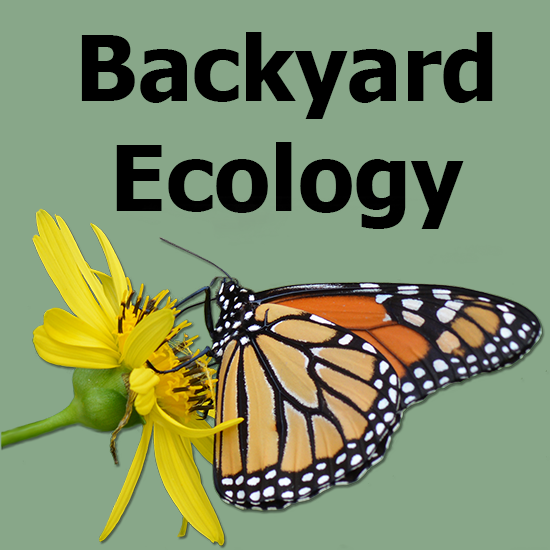
Top 10 Most Popular Backyard Ecology Episodes: Thanksgiving 2021 – Thanksgiving 2022
in PodcastOver the past year, we’ve had some amazing conversations with a variety of highly talented and passionate people. I am very grateful to them for sharing their enthusiasm and knowledge with us. What was your favorite episode of the year, and why? Please let us know in the comments. For today’s episode, I’m going to…
-
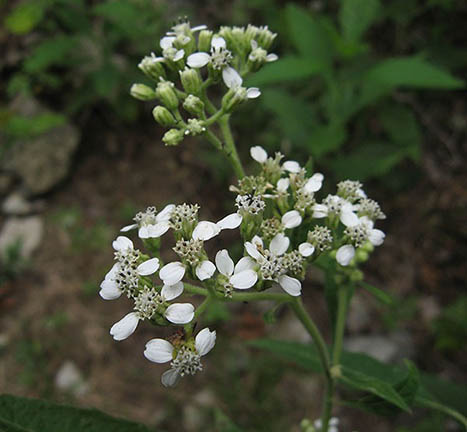
White Wingstem: A Late Fall Nectar Source and Frost Flower Producer
When we think about early winter interest in the garden or landscape, we are often thinking about trees or shrubs that have interesting bark or brightly colored berries. Native grasses can also provide early winter interest with their golden browns and attractive seedheads. However, rarely do we think about herbaceous plants as a source of…
-
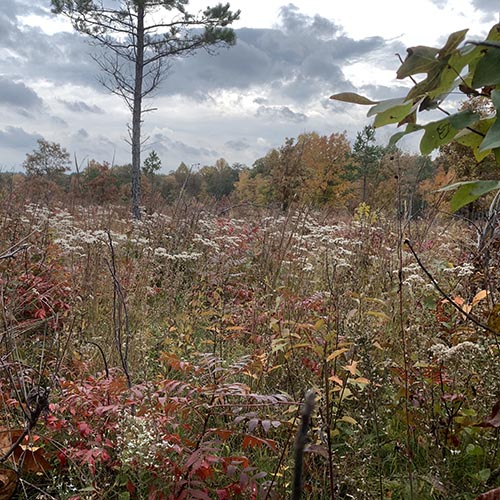
Recent Nature-related Discoveries in My Yard and Community – October and November 2022
Around here it was an amazing fall – full of fall wildflowers, late season pollinators, and beautiful fall colors. We were seeing and hearing reports of butterflies well into the first week of November! Then the seasons changed, almost overnight, as we were plummeted into early winter. However, I wouldn’t be surprised to get another…
-
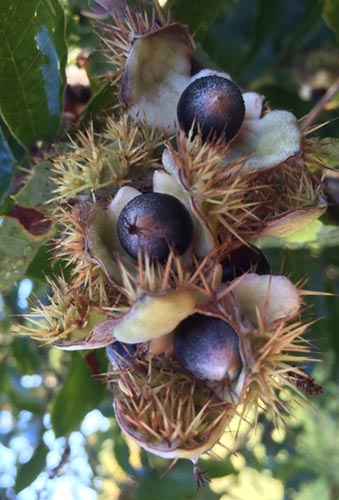
Allegheny Chinquapin: An underutilized but excellent nut producing shrub
By: Anthony Trimboli When it comes to native nut producing trees and shrubs the oaks get most of the attention. The mostly gone but not forgotten American chestnut also gets a ton of press, even though there is no blight resistant variety available – yet. While trees are excellent nut producers, they are not the…
-
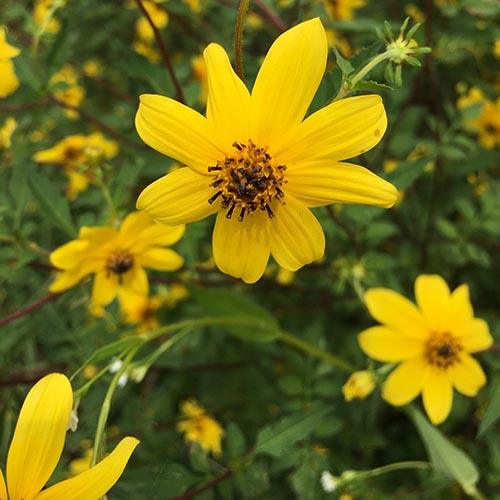
5 Native Plants that Bloom in the Late Fall
in PodcastOne of the most common pieces of advice given related to pollinator gardening is to try and have a constant supply of blooms available throughout the growing season. That’s easy in the spring. The summer is a little more challenging than the spring, but is still relatively easy. Even early fall isn’t too bad thanks…
-
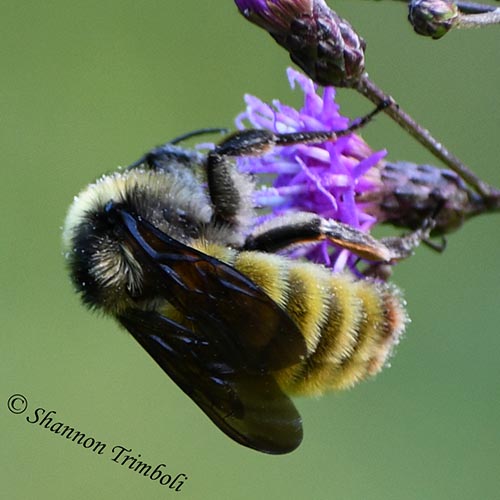
Recent Nature-related Discoveries in My Yard and Community – August and September 2022
I absolutely love fall! The temperatures are much nicer. The fields are a riot of color – lots of bright yellow, of course, but also purples, whites, pinks, oranges, and scattered other colors. Goldfinches are everywhere. And then there are all the butterflies, bees, wasps, and other “bugs” busily going about their business on the…
-
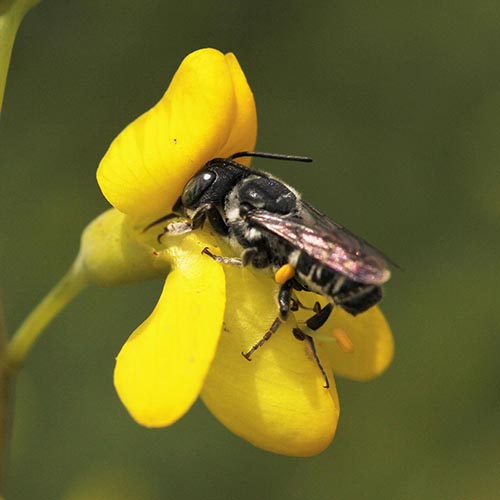
Planting for Pollinators
in PodcastOne of the most common questions I get is, “What should I plant for pollinators?” As you’ll hear in today’s conversation, I’m not the only one who frequently gets that question. It’s probably the most common question asked of anyone who promotes pollinator gardening. Unfortunately, there isn’t a simple answer to that question because lots…
-
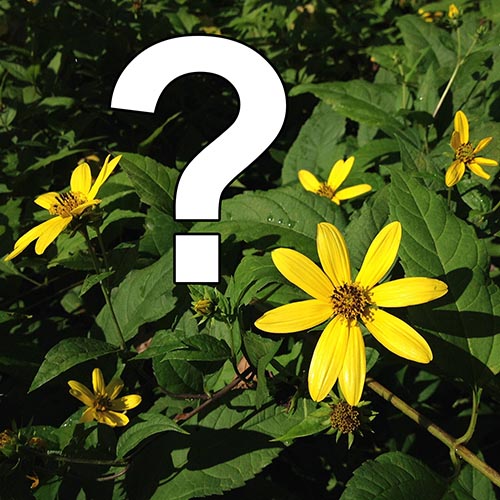
Tips and Resources for Identifying Plants
in PodcastWe’ve all been there. We are walking in the woods, in a field, along a creek bank, around our property, or around the local park and we stumble upon an interesting plant. It isn’t one that we know and we immediately begin to wonder, “what is that?” It’s a simple question that holds so much…
-
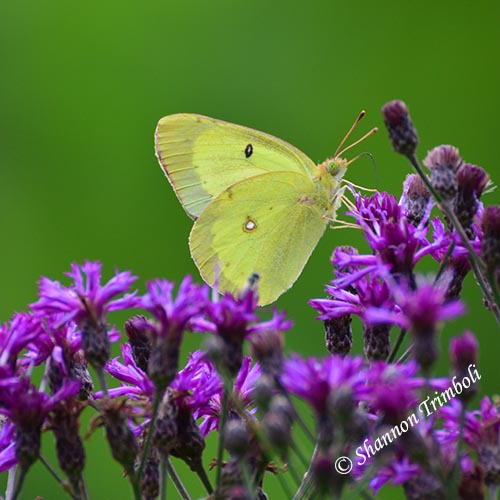
Tall Ironweed: A Beautiful Source of Fall Nectar and Pollen
Ironweeds are perennial, native wildflowers that produce beautiful, purple blooms about the time the goldenrods start to light up the fields. There are approximately 15 different species of ironweeds (Vernonia spp.) in the eastern U.S. with more out west. The most widespread species in the eastern U.S. is tall ironweed or giant ironweed (Vernonia gigantea…
-
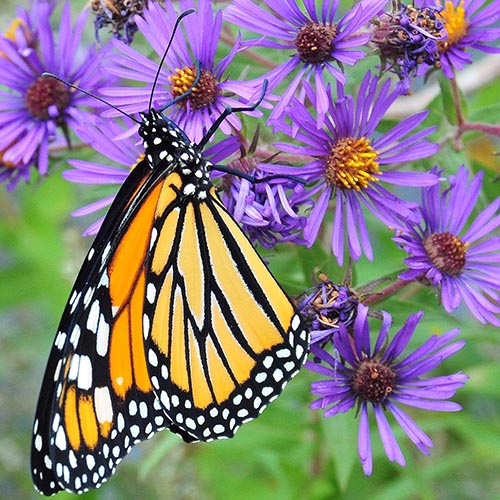
5 Fall Blooming Native Plants I Love
in PodcastFall is an extremely important time for pollinators, so having plenty of flowers available at this time of year is crucial if one of your goals is to attract pollinators. Luckily, there are lots of fall blooming, native plants that you can grow in your gardens. In the last Backyard Ecology podcast episode I talked…
-
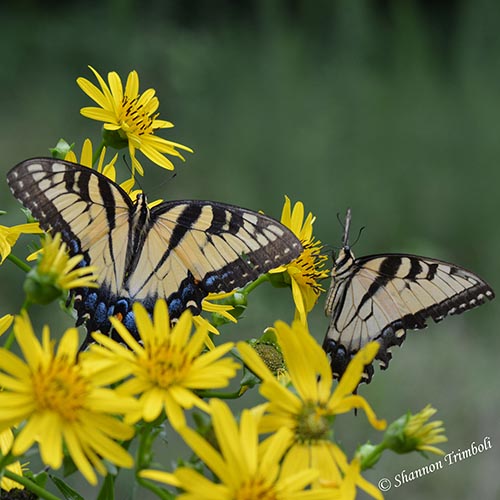
5 Late Summer Blooming Native Plants I Love
in PodcastLate summer is often thought of as a challenging time for gardening. It’s hot, it’s humid, we may or may not be getting regular rainfall, and there are often lots of other summertime activities competing for our attention. But if our goal is to plant for pollinators and wildlife, then it is important to make…
-
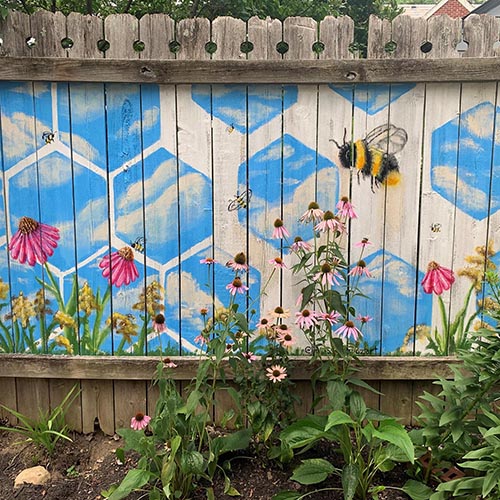
Getting the Community Involved in Creating Pollinator Habitat
in PodcastI often hear comments or questions such as, “I do what I can in my yard, but I wish more people in my community would plant pollinator gardens.” Or, “What can I do to get my community involved and to make my community more pollinator friendly?” It can feel overwhelming and like there isn’t anything…
-
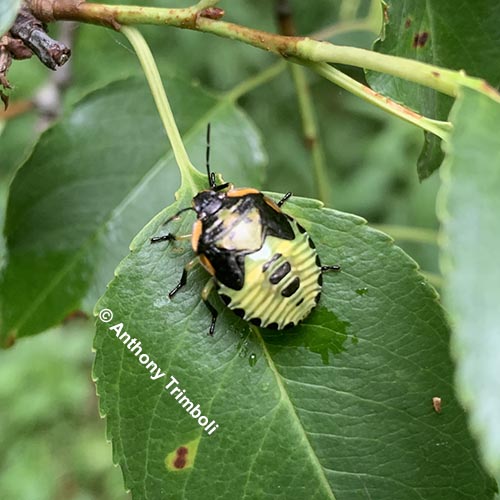
Recent Nature-related Discoveries in My Yard and Community – June and July 2022
The last month or so has been incredibly hot, dry, and humid where I’m at. Heat indexes of over 100 have become normal. I’m very grateful for all the wildlife that I can view from the house while sitting in the air-conditioned comfort on those hotter days. Yet, even with the miserably hot weather, we’ve…
-
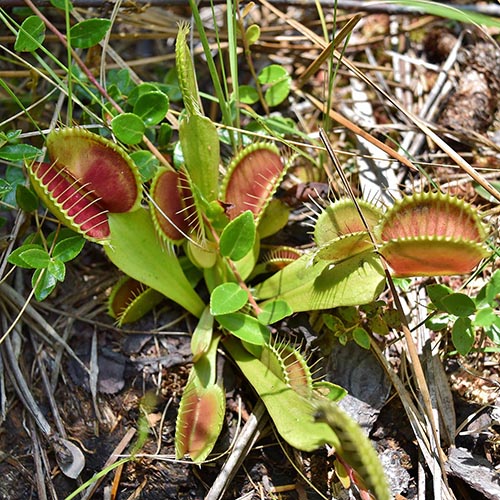
The Fascinating World of Venus Flytraps
in PodcastDid you know that Venus flytraps are insect pollinated? Or that they are native to a very small part of eastern North and South Carolina? Or that they rarely eat flies? I didn’t either until I stumbled upon a research paper talking about the pollination of Venus flytraps. That paper led me down a rabbit…
-
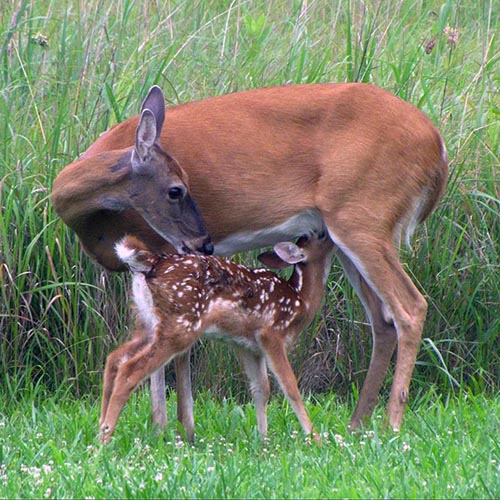
Summertime Activities and an Exciting Backyard Ecology Announcement
in PodcastSummer brings with it butterflies, lightning bugs, caterpillars, hummingbirds, fawns, baby birds, and so much more. It can be a really fun time to just get outside and observe all of the fascinating plants and animals around us. There are also plenty of things that we can be doing at this time of year to…
-
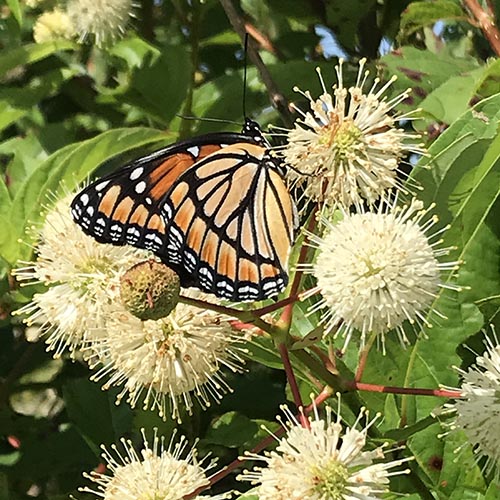
Buttonbush: A summer extravaganza for pollinators
Introduction Buttonbush (Cephalanthus occidentalis) is a deciduous shrub native to the eastern half of North America. It can be found growing naturally along creeks, ponds, lakes, and other fairly wet areas. Buttonbush can also be grown as a native ornamental in mostly sunny areas where the soil is on the moist side of medium to…
-
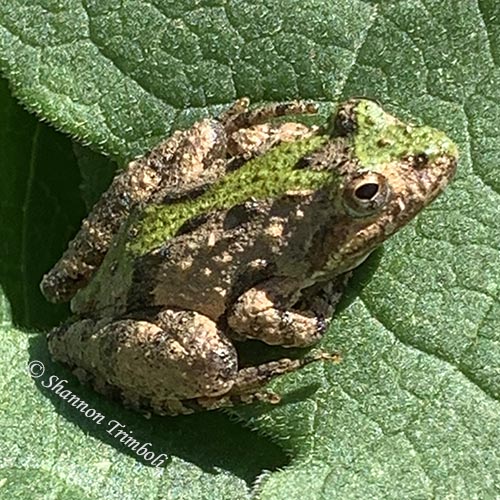
Recent Nature-related Discoveries in My Yard and Community – April and May 2022
Where did this spring go? The last couple of months have been crazy busy, but so much fun too. I have had the opportunity to make some amazing nature-related discoveries both around my own property and while traveling. Below are a few of the nature-related discoveries I’ve made on our property over the last couple…
-
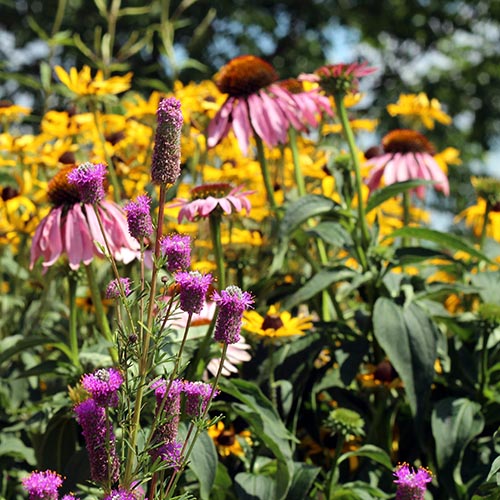
Understanding a Common Saying When Growing Native Plants
Growing native plants is one of the best things you can do to attract pollinators and wildlife. However, if you’ve ever grown native plants either in your garden or in a larger pollinator planting, then you may have noticed that some species are very slow to take off. In fact, the phrase, “The first year…
-

Gardening with Native Plants
in PodcastThe interest in gardening with native plants has been growing steadily, and I am very excited about that fact. Growing native plants in our gardens and landscapes can have many benefits – both for us as the gardeners and for the pollinators and wildlife that also call our yards home. Plus, we have some absolutely…
-
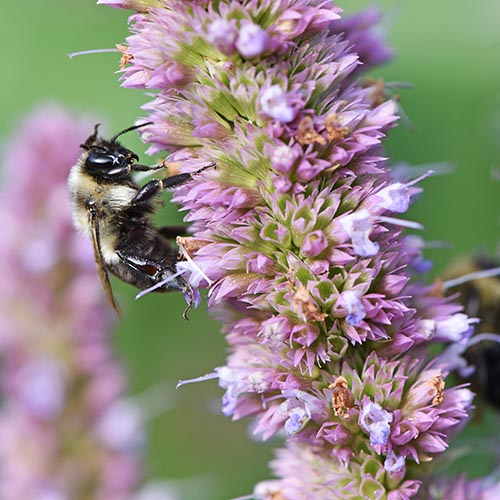
Anise Hyssop: A Long-lasting, Summer-blooming Bee Magnet
Introduction Anise hyssop (Agastache foeniculum) is a perennial native wildflower for parts of the northern half of the U.S. and into Canada. Some resources, such as the USDA Plants Database, consider it native to Kentucky. Other resources consider it adventive (likely escaped from cultivation) in Kentucky. No resources have it listed as native anywhere south…
-
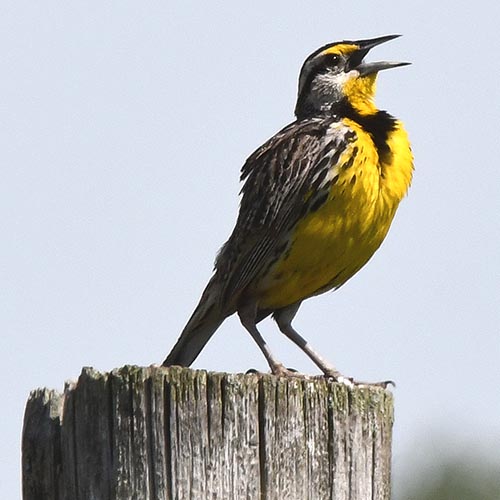
Grasslands and Grassland Birds of the Eastern U.S.
in PodcastGrassland birds such as bobwhite quail, meadowlarks, sparrows, northern harriers, burrowing owls, and many others represent one of our fastest declining groups of birds. In many ways, this makes sense since grasslands are some of our fastest declining ecosystems, especially in the eastern U.S. Yet, many people don’t realize how rapidly grassland birds and the…
-
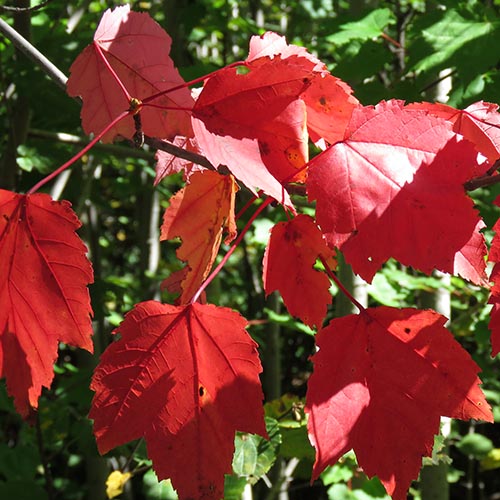
Red Maple: An Early Source of Nectar and Pollen
Introduction Red maple (Acer rubrum) is a medium height tree that can grow up to 100 feet tall. It is native to most states in the eastern half of the U.S. and much of eastern Canada. Red maple is one of our earliest blooming native trees and can be an important food source for a…
-
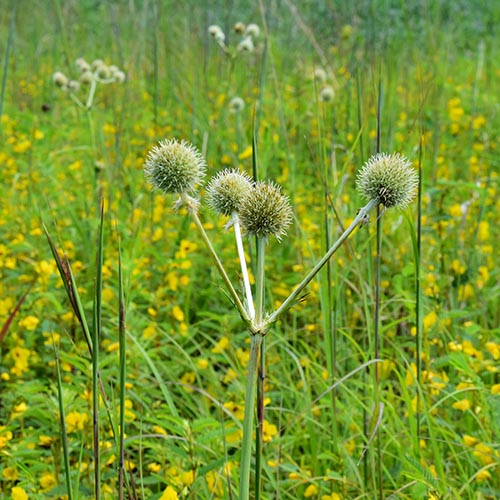
Are Larger Patch Sizes Better When Planting for Pollinators?
in PodcastWhen it comes to planting for pollinators or gardening for pollinators, the traditional advice has always been to plant larger patch sizes or clumps of plants. The thought is that the larger patch sizes will be easier to see and more attractive to pollinators than smaller clumps or patch sizes. But saying that assumes that…
-

A Conversation with Kyle Lybarger from the Native Habitat Project
in PodcastIn 2021, Kyle Lybarger began creating TikTok videos about native plants and grassland ecosystems in Alabama. He quickly became a social media star and even gained the attention of more traditional media streams including The Weather Channel. Kyle is doing terrific work teaching about and raising awareness of native plants and grassland communities. He is…
-
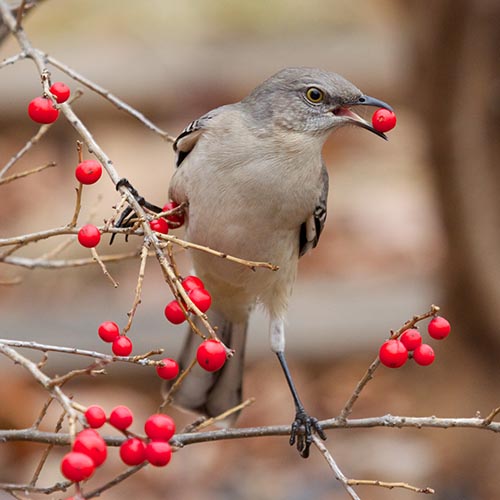
Songbirds, Fire, and Seed Dispersal
in PodcastSometimes you read or hear something that makes you say, “Wait a minute! What?” It was one of those moments that led to this episode. In this episode of the Backyard Ecology podcast, I talk with David Mason. David is a PhD candidate at the University of Florida who has been doing some really interesting…
-

Top 10 Backyard Ecology Blog Articles in 2021
I officially launched the Backyard Ecology blog in September 2020. Over the past 16 months, I’ve written over 50 Backyard Ecology blog articles, in addition to producing Backyard Ecology podcast episodes. The blog articles have covered a wide variety of topics, but generally can be grouped under 4 main categories: Profiles of native critters Profiles…
-
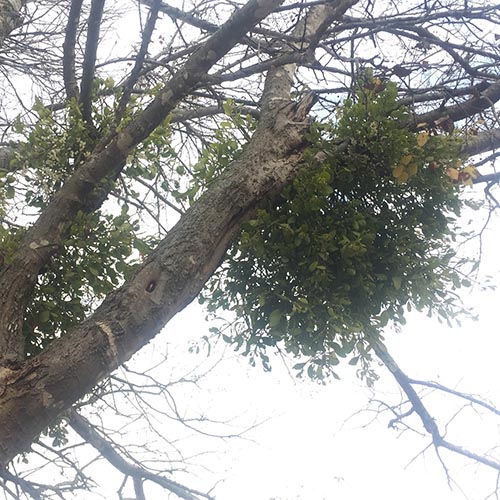
American Mistletoe – A Holiday Plant Enjoyed by Pollinators and Wildlife
It’s hard to miss the basketball-sized clusters of green leaves decorating the bare upper branches of trees as they reach up to the winter sky. Those basketball-sized clusters of leaves are most often mistletoes. There are several different species of mistletoe in North America, and even more in other parts of the world. Some prefer…
-
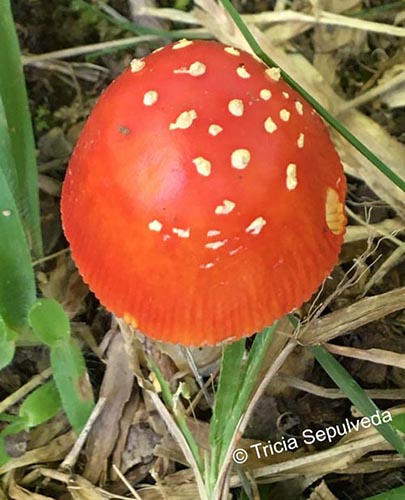
Nature-related Discoveries in My Yard and Community – October and November 2021
What a difference a couple of months have made! The leaves have fallen off the trees and I can once again see the road from my house. The fall warblers have migrated through and my winter suite of birds are arriving. The flowers have stopped blooming and beautiful seed heads have replaced the blossoms. Below…
-
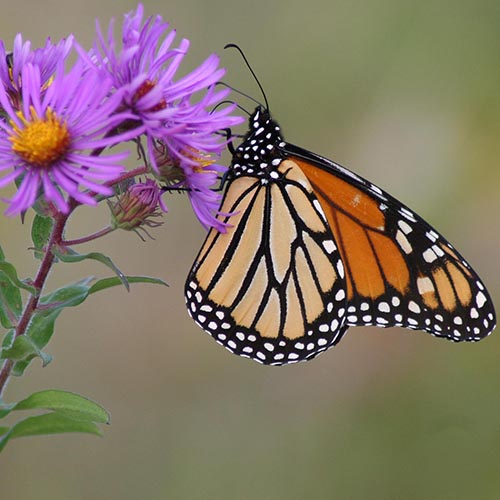
Diversity Matters When Gardening for Monarchs
in PodcastWhen it comes to gardening for monarchs, the most common thing you hear is “plant milkweeds.” Milkweeds are important, because they are the only thing that monarch caterpillars can eat. But they aren’t the whole story. In fact, having other types of flowering plants available can actually make your gardens more attractive to monarchs according…
-
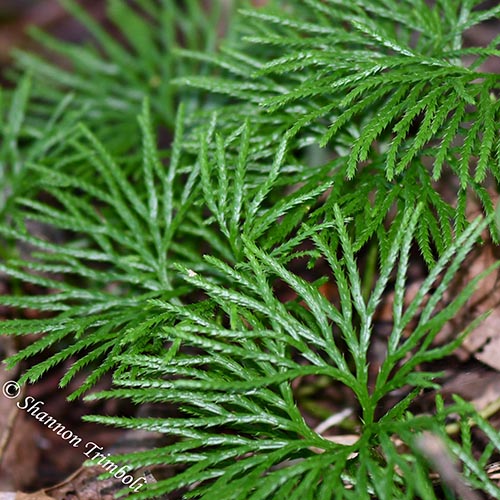
Ground Cedar: A Unique Evergreen Groundcover of Eastern Forests
Walking through my woods, I was excited to find a clump of ground cedar. My grandparents introduced this plant to me when I was kid, but they taught it to me by one of its other common names – running cedar, and I still sometimes call it that. To this day, I smile and think…
-
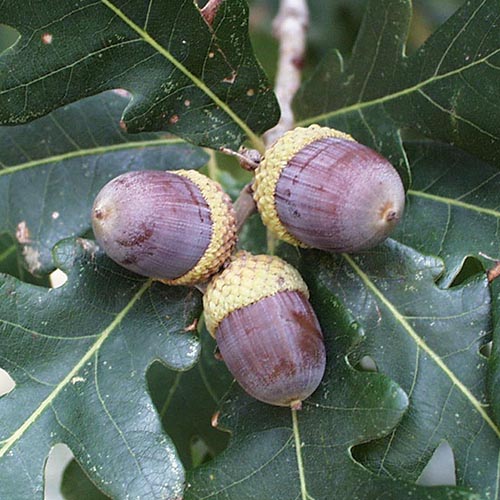
Acorns, Birds, Reptiles, Amphibians, and More: Responses to Forest Disturbances
in PodcastWhat happens when you do a shelterwood cut, conduct a prescribed burn, or have some other natural or human-made disturbance event in oak hickory forests? What happens to the acorn crop? How do different types of wildlife respond? What about the other vegetation in the woods? In this Backyard Ecology episode I talk with Dr.…
-
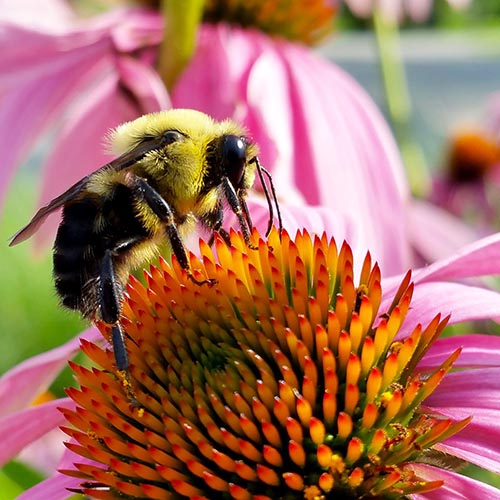
A Conversation with the Co-Hosts of the Native Plants, Healthy Planet Podcast
in PodcastSometimes it’s just fun to sit down and have a fun conversation with other people in the industry, and that’s exactly what we did in this episode of the Backyard Ecology podcast. In this episode, I talk with Fran Chismar and Tom Knezick. Fran is the Sultan of Sales for Pinelands Nursery and the co-host…
-
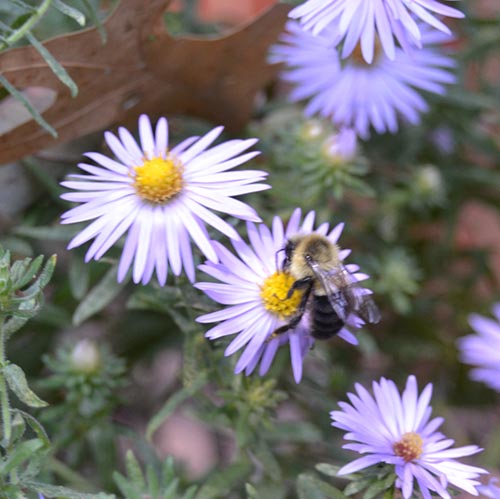
Remember the Shoulder Seasons when Planting for Pollinators
When planting for pollinators, the general advice is to have at least three different things blooming throughout the growing season. For most of the spring, this is easy because it seems like everything is in bloom and everyone has some sort of flowering plant in their yard. I could easily fill a whole book with…
-
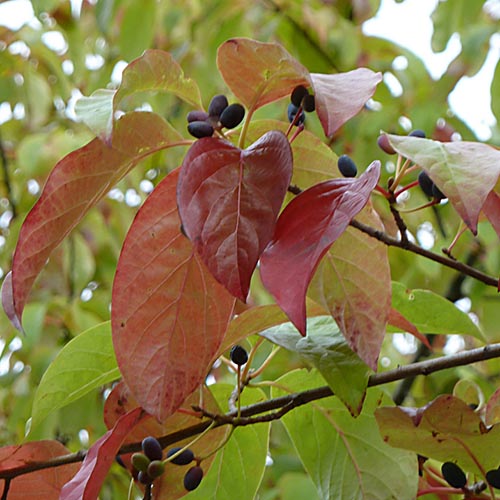
Black gum: A wonderful wildlife tree that also works well in landscaped settings
Have you ever been walking in August or September and noticed a tree with a few scattered red leaves? You may have thought “that’s weird,” because obviously it is still way too early for the leaves to be turning colors. If so, you may have been looking at a black gum. Black gum is a…
-
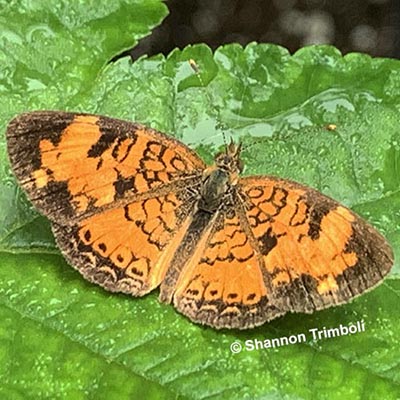
Recent Nature-related Discoveries in My Yard and Community
June and July have been busy months filled with tons of nature-related discoveries! I missed most of our early lightning bug species, but they were insane in June and July. There were several nights when I picked out at least half a dozen different flash patterns. Each of those would have been a different species.…
-
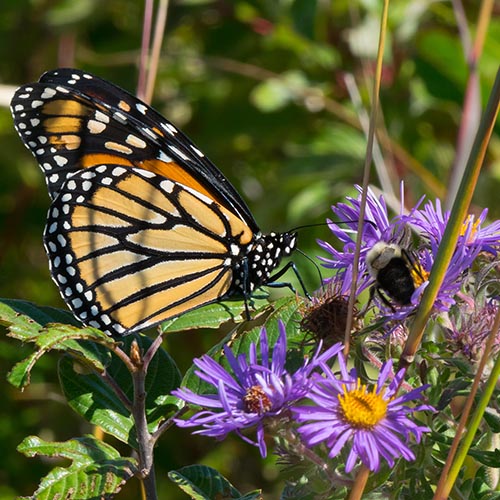
New England Aster: A Beautiful and Diverse Native Wildflower
New England aster (Symphyotrichum novae-angliae) is a late summer / early fall blooming wildflower that is native throughout most of North America. In the last decade or so, it has become a fairly common plant to include in native plant and pollinator gardens, as well as, in larger habitat restoration projects. However, it was introduced…
-
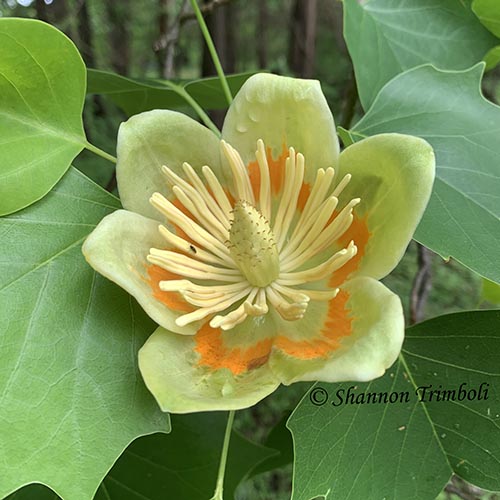
Recent Nature-related Discoveries in My Yard and Community
This has been a crazy year. The temperatures in May seemed cooler than normal to me and it was relatively dry overall. I mean, we would get a gully washer of a storm, then nothing….. until another gully washer came. We definitely didn’t seem to get the frequent, gentle May showers that I tend to…
-
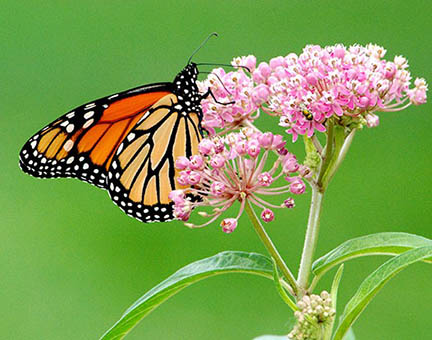
Plant Multiple Species of Native Milkweeds for Monarch Caterpillars
I’m often asked what is the best species of milkweed to grow for monarchs. In many ways, the answer is whatever species is native to your area and has the tastiest leaves for the monarch caterpillars to eat at that particular instant in time. Let’s talk about that statement for a minute, why it’s true…
-
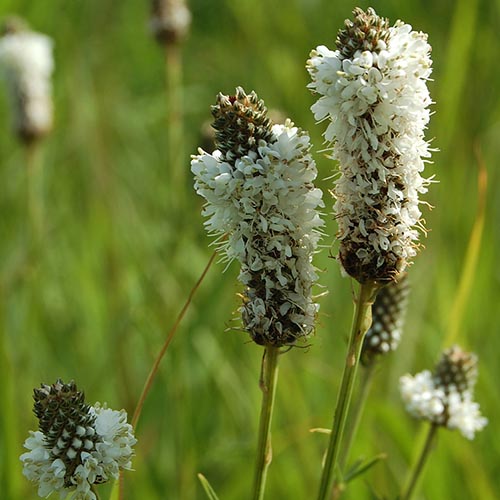
White Prairie Clover: A mid-summer nectar and pollen source for bees
White prairie clover (Dalea candida) is a native, perennial wildflower throughout most of the Midwest and central U.S. The eastern edge of its native range crosses the Mississippi River and includes Illinois, Kentucky, Tennessee, and Georgia. White prairie clover is also commonly grown in garden settings outside of its native range. General Biology and Life…
-
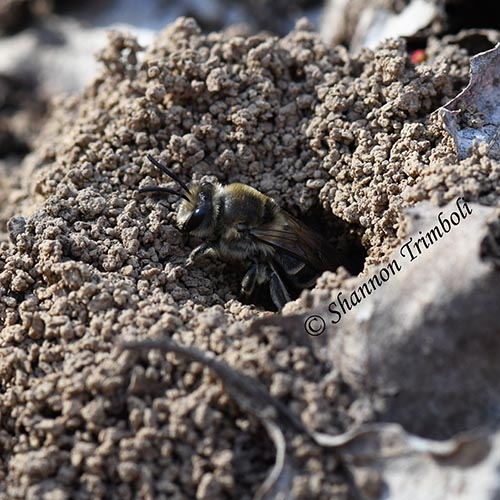
Nature-related Discoveries in My Yard and Community – April 2021
This is always such an exciting time of year. The wildflowers are blooming. The insects are appearing again. The birds are starting to sing their dawn chorus in the mornings again. And the spring warbler migration is in full swing. Things are changing almost daily. There is always some new nature-related discovery to be made.…
-
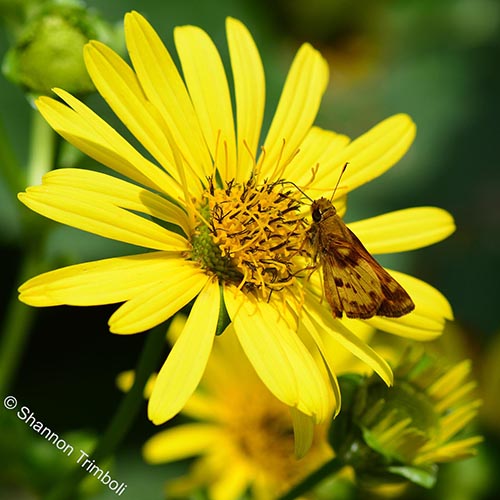
Growing Native Plants: Insights and Stories from 3 Native Plant Nurseries
in PodcastGardening with native plants has been growing in popularity. Some people want to grow native plants for plant conservation purposes or to showcase the diverse, local flora of their region. Others want to grow native plants for the benefits they provide to pollinators and wildlife. Still others are interested in native plants as sources of…
-
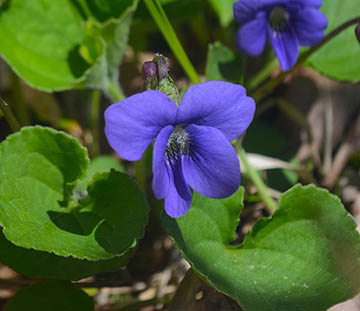
Consider a Living Green Mulch
We all have different aesthetic views. That’s part of what keeps all of our gardens interesting and makes them uniquely our own. Some of us like our beds to be very neatly maintained with expanses of wood mulch separating out each group of plants. Others like to use gravel to segregate their plantings. While still…
-
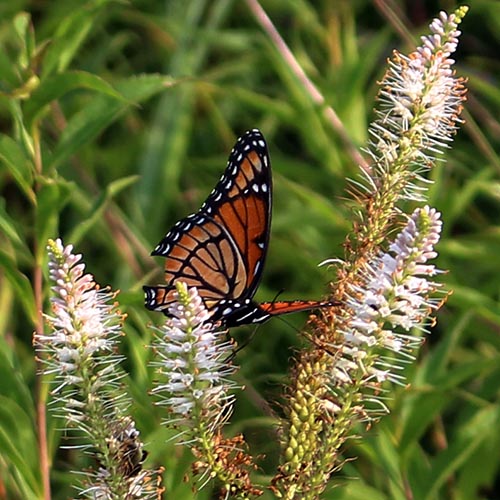
Culver’s Root: Providing a Summertime Bounty of Nectar and Pollen
General Biology and Life History of Culver’s Root Culver’s root (Veronicastrum virginicum) is an herbaceous perennial that is native to most of the eastern U.S. and parts of eastern Canada. It is much more common in some states than others. Culver’s root grows naturally in moist to wet meadows or open woods. It can grow…
-
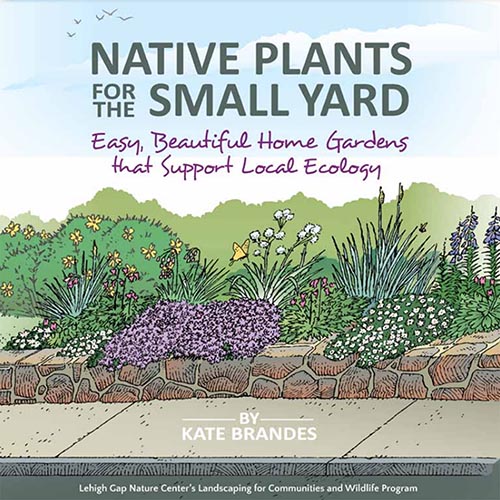
Growing Native Plants in Small Yards
in PodcastI am frequently asked about growing native plants in small spaces or in typical suburban yards with HOA or city ordnances. And I’m not the only one who’s getting those questions. I hear and see those same questions being asked throughout the native plant and pollinator communities. That’s why I was so excited to talk…
-
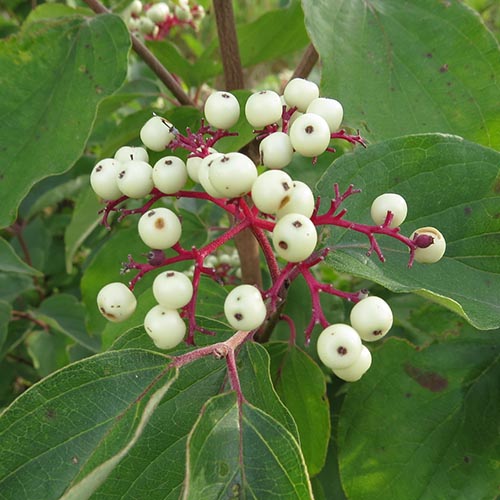
Attract Songbirds by Planting Native Trees and Shrubs that Produce Berries
Planting native trees and shrubs that produce berries is a great way to attract songbirds to your yard. Many of our songbirds rely on berries and other berry-like fruits for at least part of their diet. Some of our migratory songbirds, like gray catbirds, consume a significant amount of fruit, especially during their fall migration.…
-
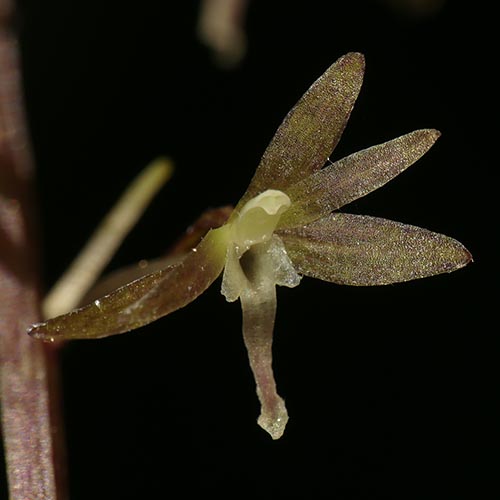
Cranefly Orchid: A cryptic native orchid
Take a walk in the woods in the late winter or early spring and you may find a single, green, oval leaf lying among the fallen tree leaves. I often find single leaves scattered here and there, but you can occasionally find small patches. The leaves are around 3 inches in length and kind of…
-
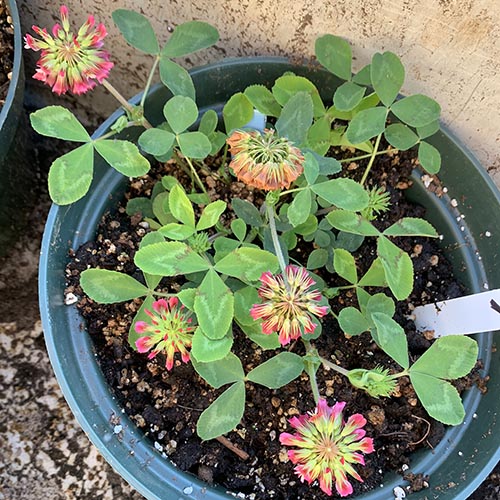
Clovers! Native Clover Conservation, Clover Yards, and More
in PodcastClovers are often suggested for lawn alternatives or for incorporating into our yards to make them more pollinator friendly. Clovers can also play important roles in agriculture either in grazing systems or as cover crops in row cropping systems. In addition, they are a favorite of deer and rabbits. However, most (if not all) of…
-
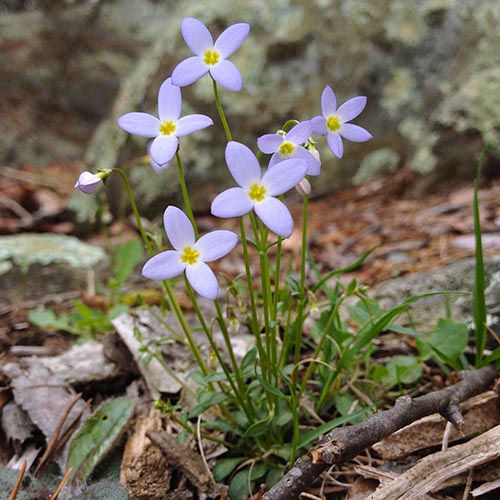
Common Bluets: Delicate Blue Flowers of Spring
Common bluets, a.k.a. Quaker ladies or azure bluets, (Houstonia caerulea) are tiny, blue wildflowers that are native throughout most of eastern North America. There are several other species of bluets that also grow within parts of eastern North America, but common bluet is arguably the most widespread and common species overall. Common bluets grow naturally…
-
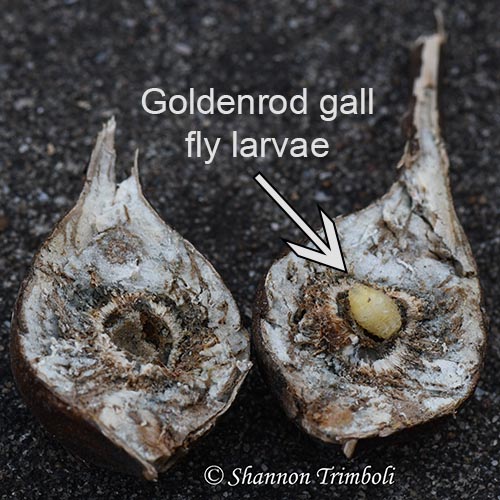
Nature-related Discoveries in My Yard and Community – January 2021
As I write this, I’m looking out my window and watching the farm turn white. We’ve really only had one other snowfall this winter that produced any accumulation and that only lasted for a couple of hours. This one will likely last longer, but I don’t expect it to get too bad. I have lots…
-
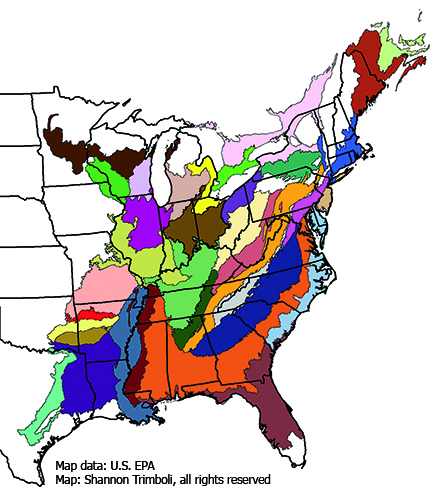
Gardening with Native Plants: Hardiness Zones and Ecoregions
Plant Hardiness Zones Pick up almost any seed packet, read almost any gardening book, or attend almost any gardening class and you are likely to see a USDA plant hardiness map. The map was developed by the USDA and is based on the average minimum winter temperatures for an area. It divides the country into…
-
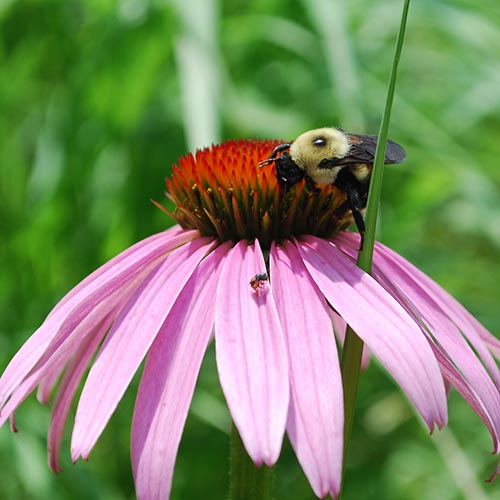
Native Seed Production and Tips for Starting a New Native Plant Garden or Restoration Area
in PodcastGrowing native plants has grown in popularity over the last couple of decades. This has led to an increased demand for native plant seeds. However, many of us have never really stopped to think about how those native seeds are produced on a commercial level. In this episode, we talk with John Seymour and Robert…
-
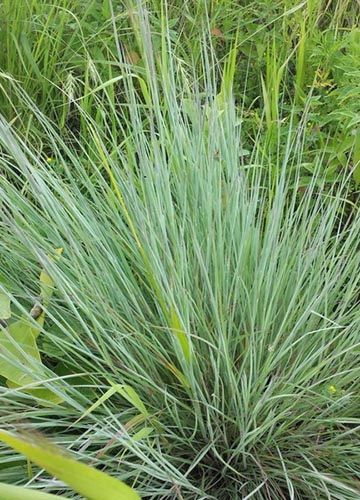
Little Bluestem: A Native Grass for Prairies and Gardens
Little bluestem (Schizachyrium scoparium) is native to the lower parts of Canada and almost the entire lower 48 states in the U.S. It can be found growing naturally in barrens, prairies, savannas, and open woodlands. Little bluestem prefers drier upland sites, but is occasionally found in lower moister areas, especially in some parts of its…
-
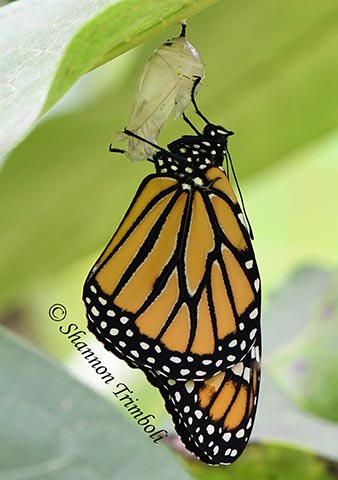
What does the endangered species ruling for the monarch butterfly really mean?
On December 15, 2020, the U.S. Fish and Wildlife Service (USFWS) “found that adding the monarch butterfly to the list of threatened and endangered species is warranted but precluded by work on higher-priority listing actions.” But, what does that really mean? And how does it affect things going forward? What does the ruling mean? To…
-
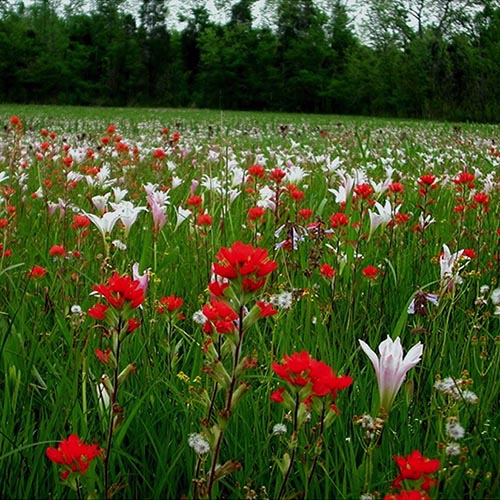
Conserving our Southeastern Grasslands with Dwayne Estes
in PodcastMany of us grew up hearing about the decline of the old growth forests and their impacts on neotropical songbirds and other wildlife. I think this was especially true for those of us who grew up here in the eastern U.S. However, the story that hasn’t been told as well is that of the southeastern…
-
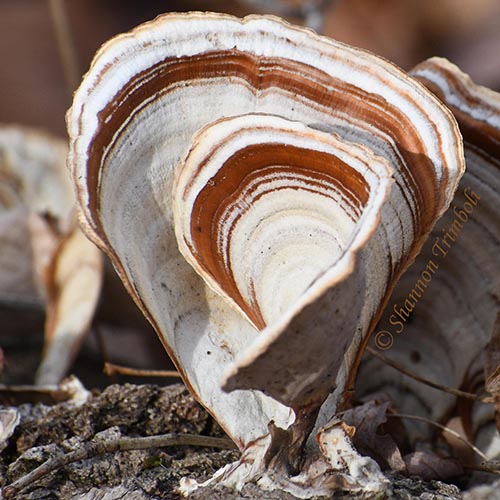
Nature-related Discoveries in My Yard and Community – December 2020
I hope everyone had a good a holiday season and start of the new year. December was kind of a difficult month for me this year – lots of personal stuff going on. But I was still able to get outside some and enjoy the nature around me. Here are some of the fun nature-related…
-
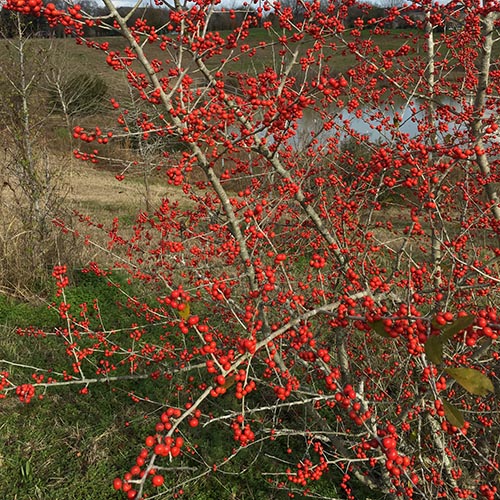
Possumhaw: A deciduous holly
Possumhaw (Ilex decidua) has many common names including deciduous holly, swamp holly, and prairie holly. It is also sometimes called winterberry, but be aware that “winterberry” is more commonly used in reference to Ilex verticillata, which is also a deciduous holly. To make things more complicated, Ilex verticillata is sometimes called “deciduous holly,” even though…
-
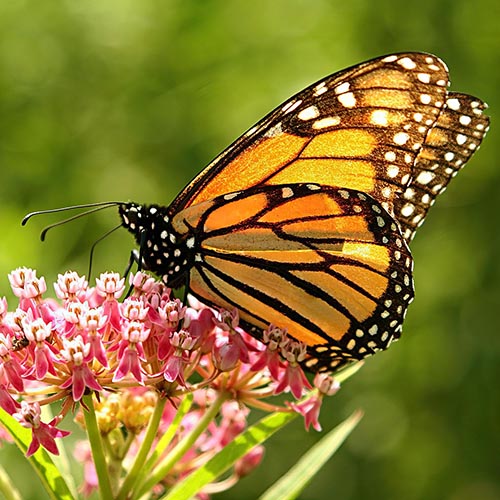
Milkweeds in Urban and Suburban Monarch Waystations with Dr. Adam Baker
in PodcastHi Everyone! Today we are talking with Dr. Adam Baker who recently completed his PhD studying monarch butterflies and their use of monarch waystations in urban and suburban areas. His research has led to some important and easily applied strategies that any of us can use in our gardens. First, Adam looked at existing monarch…
-
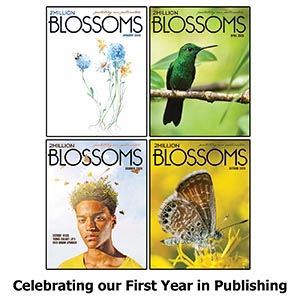
2 Million Blossoms and Dr. Kirsten Traynor
in PodcastHi Everyone! On today’s episode of Backyard Ecology we talk with Dr. Kirsten Traynor, a research associate at Arizona State University and the editor of 2 Million Blossoms, a quarterly magazine dedicated to protecting our pollinators. Our conversation takes a curvy, twisty path that covers multiple different topics including what led her to start the…
-
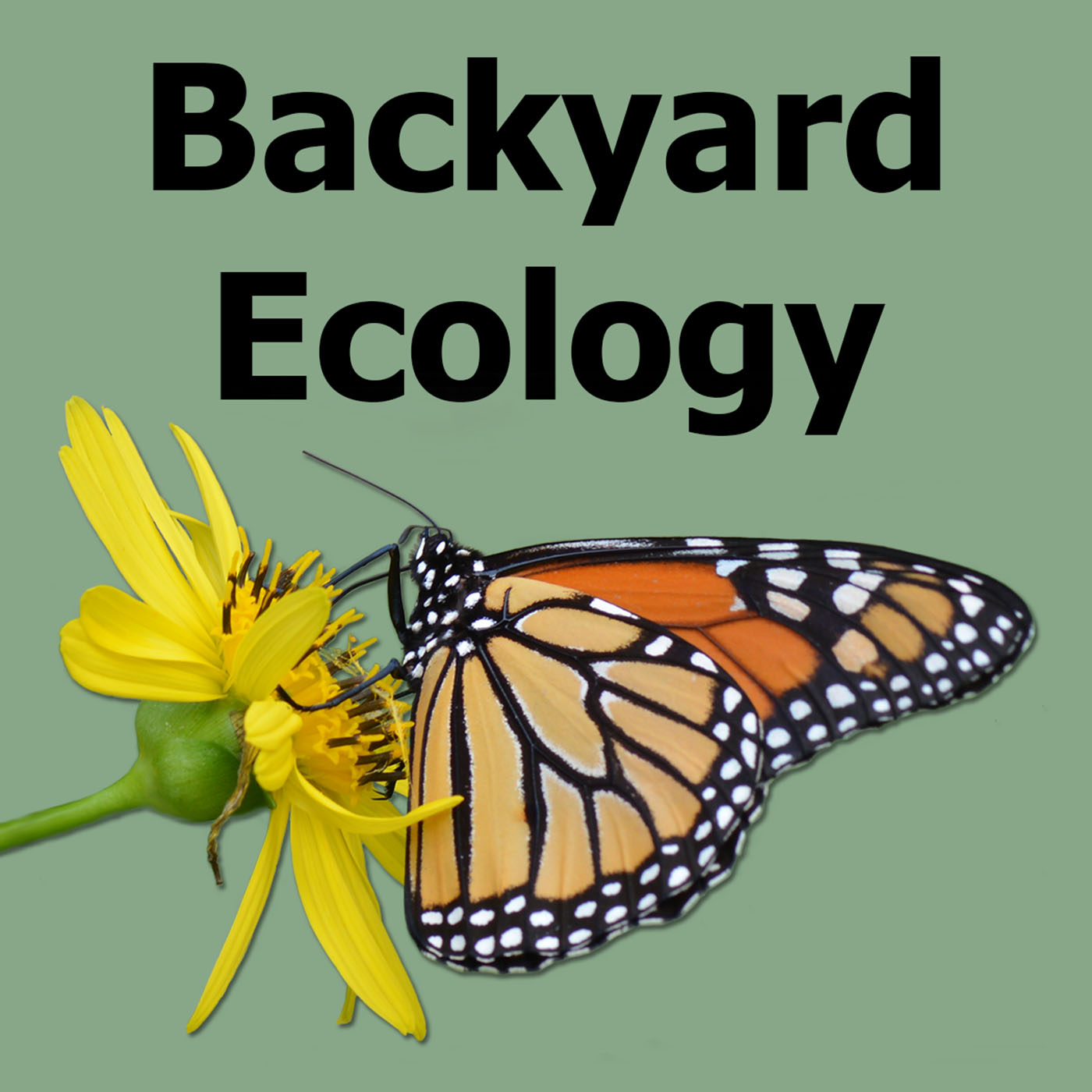
Announcing the Backyard Ecology Podcast
Over the last few months, I’ve been researching and working on a new project. Today I’m super excited to announce that I am launching a Backyard Ecology podcast! For those who might be wondering, a podcast is kind of like an audio version of a blog. I started listening to podcasts about a year and…
-
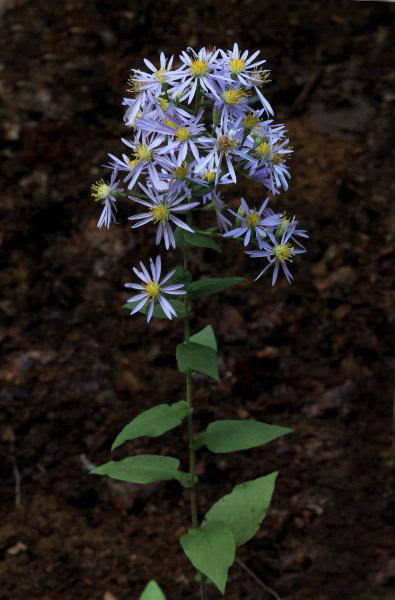
Wavy leaf aster – A late feast for pollinators
The wavy leaf aster (Symphyotrichum undulatum) is a late blooming wildflower that is native to most of the eastern U.S. It is fairly common throughout much of its range and can be found growing wild in dry, open woods and along woods edges. Like many of our other asters, wavy leaf aster can also make…
-
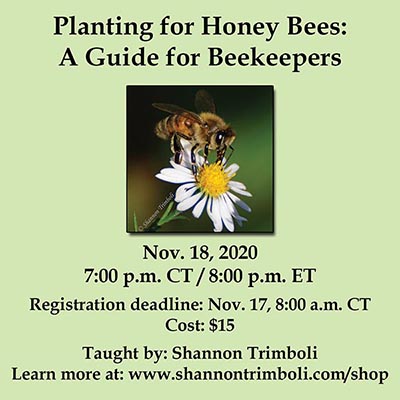
Planting for Honey Bees: A Guide for Beekeepers – Virtual Class
“What can I plant for my honey bees?” is a question that beekeepers often ask me. It’s also the question that I asked when I began my beekeeping journey. However, there isn’t a single one-size-fits-all answer to that question. Or, at least not a GOOD one-size-fits-all solution when it comes to planting for honey bees.…
-
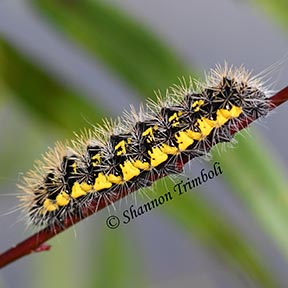
Nature-related Discoveries in My Yard and Community – October 2020
Fall is my favorite time of year. I love the cooler, less humid weather, the distinctive fall smell in the early morning, the beautiful fall flowers, the busy actions of the butterflies and bees as they prepare for whatever winter looks like for them, and the transition from our summer bird species to our winter…
-
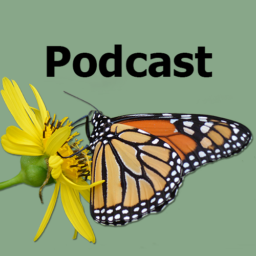
Introducing the Backyard Ecology podcast
in PodcastMany people believe that nature is only “out there” – in national parks, other large chunks of pristine land, or some far-off exotic place. For a long time, I did too. But the truth is that nature is everywhere and there are still plenty of discoveries to be made about the common species inhabiting our…
-
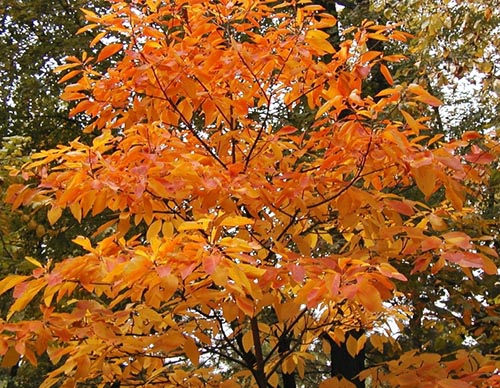
Sassafras – A Beautiful Native Tree Used by Wildlife and Humans
Sassafras (Sassafras albidum) is native to most of the eastern U.S. It is commonly found growing in fencerows, along the edges of woods, along roads or other right-of-ways, in forest openings, and in other sunny to mostly sunny locations. In more mature forests, small sassafras saplings can often be found waiting for a canopy opening…
-

Nature-related Discoveries in My Backyard and Community – September 2020
Over the past several weeks, I’ve been lucky enough to find some amazing critters and enjoy some beautiful wildflowers. In this week’s article, I just wanted to share some of the recent nature-related discoveries I made in my backyard and community. This weird looking wasp is an American pelecinid wasp (Pelecinus polyturator). I discovered it…
-
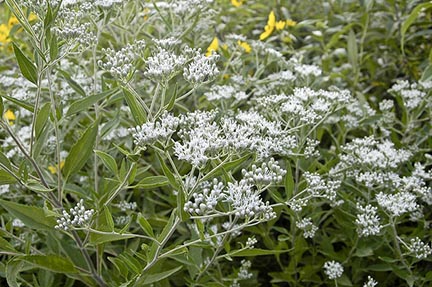
Thoroughworts and bonesets – Some of the white flowers of fall
Thoroughworts and bonesets (Eupatorium sp.) are common fall wildflowers throughout much of the eastern U.S. They are often found growing in fields and other open areas. Their flat-topped clusters of bright white flowers can contrast beautifully with the bright yellow goldenrods or the deep purple ironweeds that often grow in similar habitats. Like the goldenrods,…
-
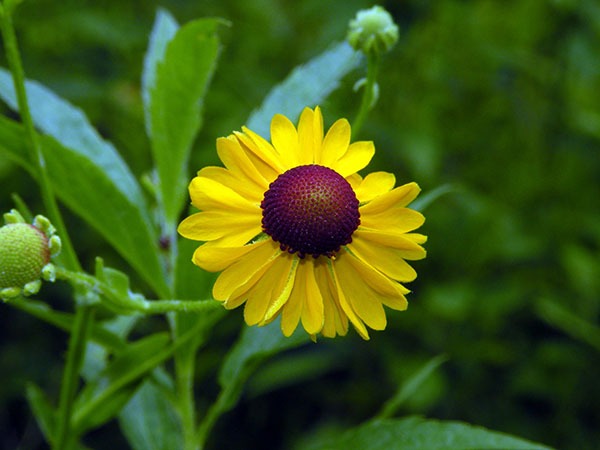
Purple-headed Sneezeweed
Purple-headed sneezeweed (Helenium flexuosum) is a native wildflower in most of the eastern U.S. Although it can be a beneficial and unique addition to pollinator gardens, many people avoid this plant because of its common name. So, let’s address that concern to start with because allergy sufferers have nothing to fear from this plant. Once…
-
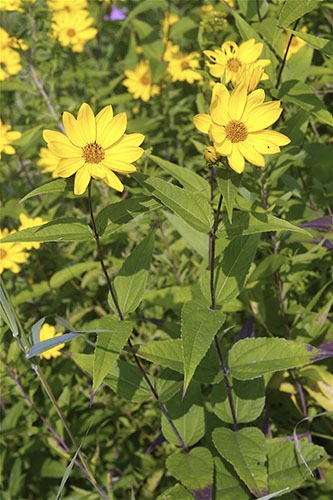
Rough Sunflower
Helianthus hirsutus, a.k.a rough sunflower, hairy sunflower, or stiff-haired sunflower, is a native wildflower in much of the eastern and central U.S. Like its common names suggest, rough sunflower has hairy stems and leaves that give the plant a very rough texture. This rough texture helps make the plant relatively deer resistant. Deer may occasionally…
-
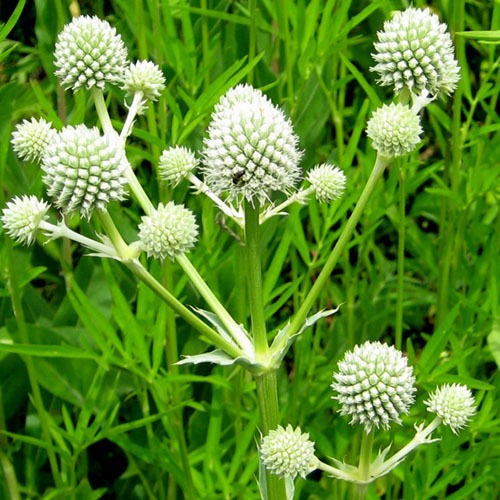
Rattlesnake Master
Rattlesnake master (Eryngium yuccifolium) is an unusual wildflower native to open areas in much of the central and eastern U.S. In the wild, it is an indicator of high-quality remnant prairie or barrens. It is also commonly included in prairie restoration or large pollinator plantings. In recent years, it has increased in popularity as a…
-
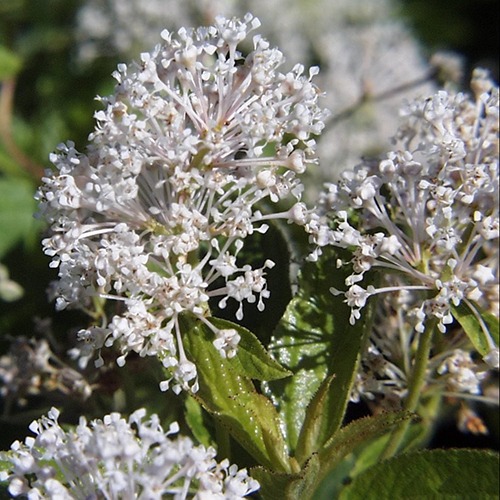
New Jersey Tea
New Jersey tea (Ceanothus americanus) is a low-growing, native shrub that can be found throughout most of the eastern half of the U.S. It is an interesting plant from both an ecological standpoint and from a historical / ethnobotanical standpoint. In the wild, New Jersey tea is typically found in rocky areas, sandy areas, glades,…
-
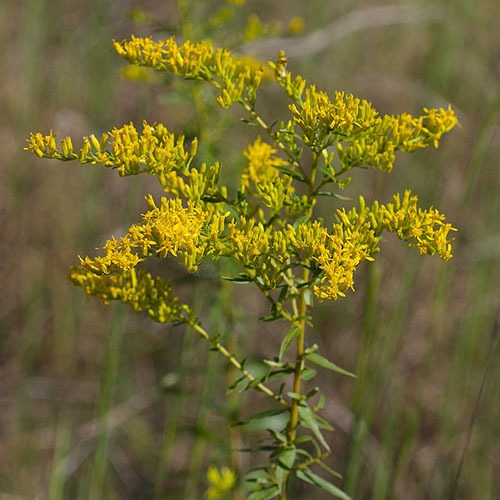
Sweet Goldenrod
Sweet goldenrod (Solidago odora) is one of the over 30 species of goldenrods native to Kentucky according to the USDA Plant Database. This species of goldenrod is also native to most of the eastern U.S. (sorry Indiana, Illinois, Michigan, and Maine – it’s not native in your states) and a few states west of the…
-
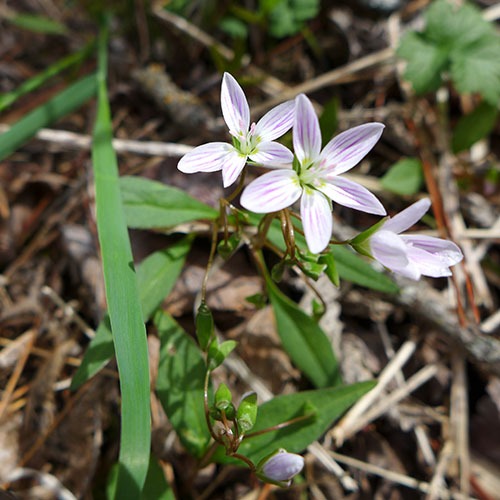
Springbeauty
The springbeauty (Claytonia virginica) is native to most of the eastern half of North America. It can be found growing in rich, moist woods and occasionally in semi-shaded lawns that don’t get mowed early in the season. Springbeauties prefer rich soils full of organic matter and hummus, but can tolerate less than ideal conditions better…
-
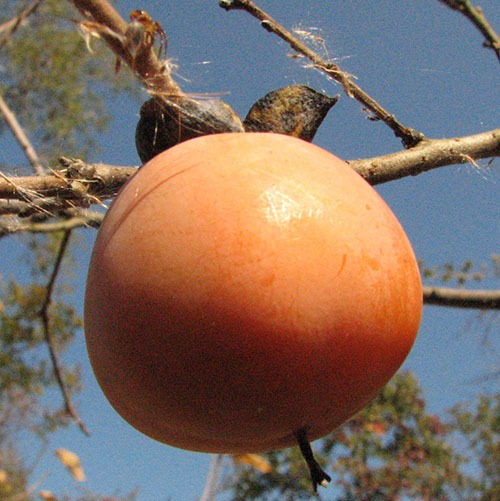
American Persimmon
The American persimmon (Diospyros virginiana) is a medium-sized tree that is native to most of the eastern half of the U.S. It grows in full sun and a wide variety of soils. The dark green leaves are your stereotypical “leaf shape” so aren’t much help by themselves for identifying the tree. The bark, however, is…
-
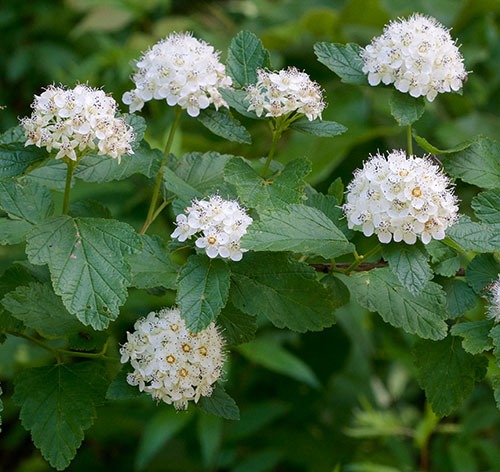
Ninebark
Ninebark (Physocarpus opulifolius) is native to most of the eastern half of the U.S. In the wild, this shrub is often found along streambanks, woods edges, rocky slopes, and moist open areas. Although it is often found naturally in medium to moist locations, once established, ninebark can be very drought tolerant. In recent years, ninebark…
-
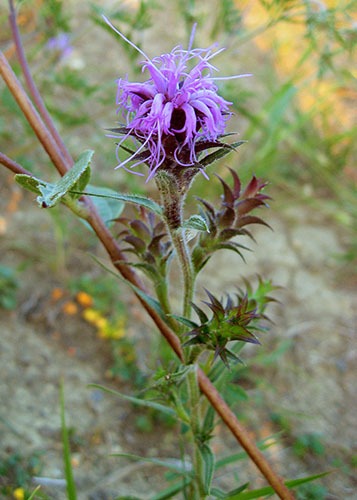
Scaly Blazing Star
Scaly blazing star (Liatris squarrosa) is native to much of the U.S. and is one of approximately 10 species of blazing stars that are native to Kentucky. It grows naturally in sunny, open areas with thin, rocky or sandy soils. Scaly blazing star tends to be shorter than many other species of blazing star which…
-
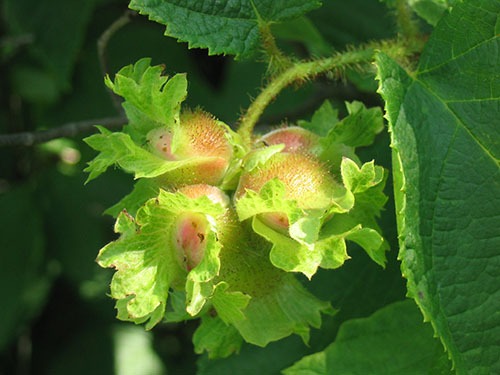
American Hazelnut
The American hazelnut (Corylus americana) is native throughout much of the eastern two thirds of the U.S. It grows in full sun to part shade, but produces more nuts in full sun, and will tolerate a wide variety of soils. This native shrub often forms multi-trunked thickets and can be 5-10 feet tall. American hazelnuts…
-
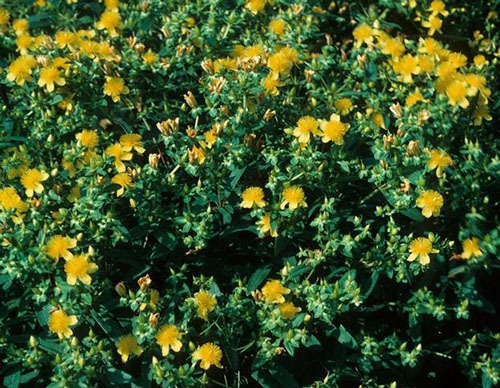
Plant Native Trees and Shrubs in the Late Fall
Although we often think of planting wildflowers and other herbaceous plants for pollinators, trees and shrubs can be extremely beneficial for pollinators. If those trees and shrubs are native, then they tend to support a wider variety of pollinators than their non-native counterparts, and they provide this support to the adult pollinators as well as…
-
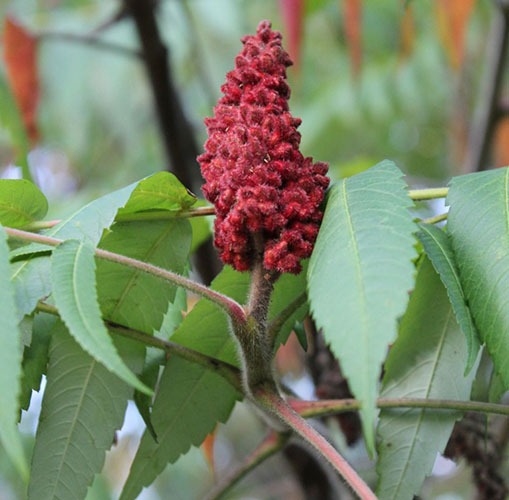
Staghorn Sumac
Note: Staghorn sumac and poison sumac (Toxicodendron vernix) are two different plants. They are both in the cashew family, but poison sumac is more closely related to poison ivy (Toxicodendron radicans) than staghorn sumac. At one time poison ivy and poison sumac were considered part of the Rhus genus, and some older references still contain…
-
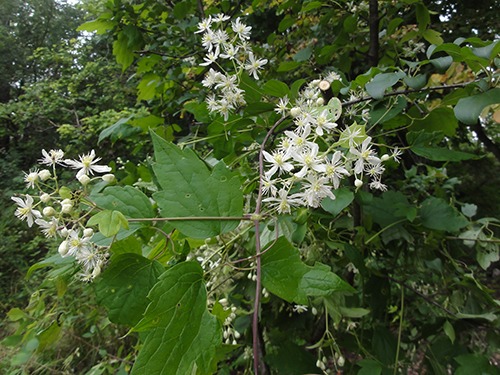
Virgin’s Bower
Virgin’s bower (Clematis virginiana) is a native vine that grows throughout much of the eastern two thirds of the country. As the scientific name suggests, this is a native clematis and related to the exotic clematises that are common in the horticulture trade. In the wild, virgin’s bower is most often found along streambanks or…
-
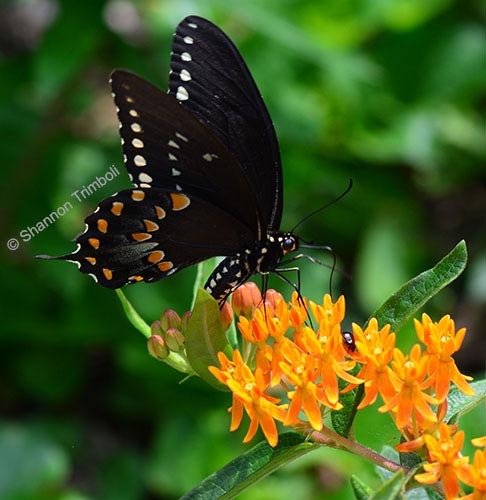
Plant Native Perennial Wildflowers in the Fall
We always think of spring as the planting season, but fall is the perfect time to plant native perennial wildflowers. When we plant in the spring, the flower has to divide its energy between establishing a strong root system and growing the vegetative portion of the plant and perhaps flowering that year. However, when we…
-
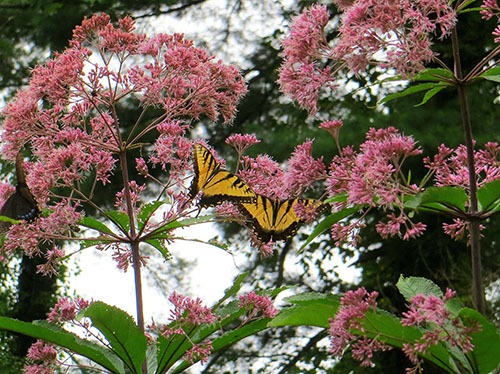
Joe-pye Weed
Joe-pye weeds are tall, native wildflowers that produce a large, pink cluster of flowers in the late summer / fall. Five species of joe-pye weeds (Eutrochium sp.) can be found in the eastern U.S. The three most common species are hollow joe-pye weed (Eutrochium fistulosa), spotted joe-pye weed (Eutrochium maculatum), and sweet joe-pye weed (Eutrochium…
-
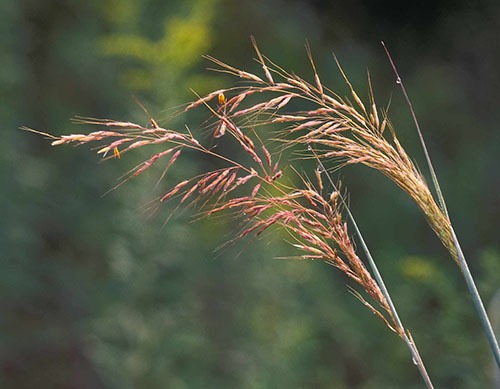
Plant Native Grasses
Wait a minute. Plant grasses? I thought there was a push among those gardening for pollinators and wildlife to reduce yards and grassy areas…. Well, yes, to all of that. The key point here is to plant native grasses like big bluestem, little bluestem, Indian grass, prairie dropseed, and many others. These plants play key…
-
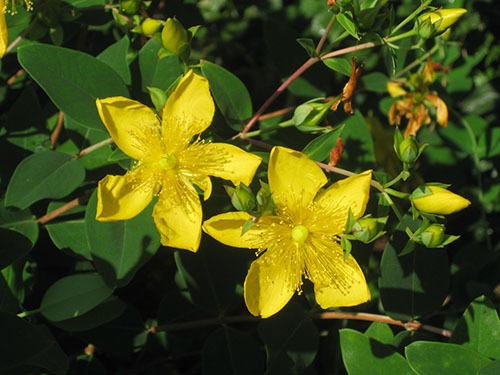
Shrubby St. John’s Wort
Shrubby St. John’s wort (Hypericum prolificum) is a native shrub throughout most of the eastern half of the U.S. It can be 2-5 feet tall and grows in a wide variety of soils. It grows in full sun to partial shade, but prefers more sun. In recent years, shrubby St. John’s wort has also grown…
-
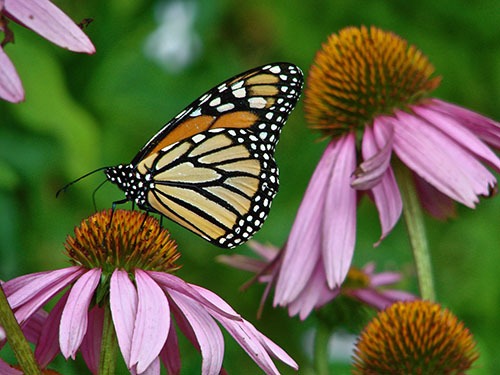
Purple Coneflower
Purple coneflower (Echinacea purpurea) is a perennial wildflower native to most of the eastern 2/3 of the U.S. In the wild it is found in open prairies and meadows. It is also commonly planted in prairie restoration sites or similar settings and has become a popular ornamental flower that can be found throughout the horticulture…
-
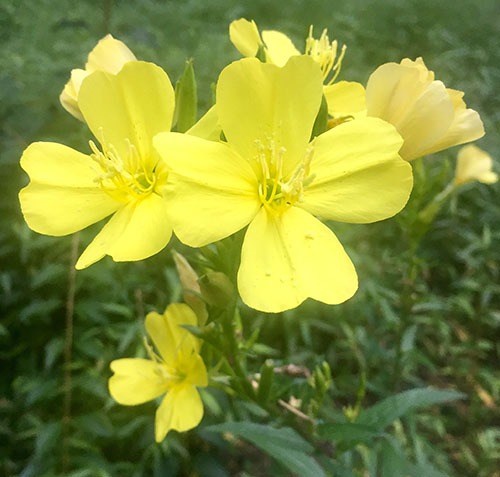
Common Evening Primrose
The common evening primrose (Oenothera biennis) is a native wildflower in most of the U.S. It is found naturally in sunny fields, roadsides, prairies, and disturbed areas. Common evening primrose can also be grown in the garden as a native wildflower. It is a biennial, meaning that it lives for two years and only blooms…
-
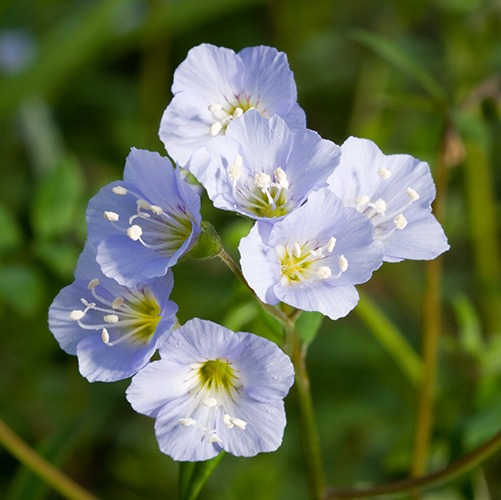
Jacob’s Ladder
Jacob’s ladder (Polemonium reptans) is one of our native, ephemeral wildflowers. It grows in rich, open woodlands throughout much of the eastern U.S. It is a relatively short plant, only growing to around a foot tall. The leaves are compound and are said to resemble a ladder, thus the common name. The blue, bell-shaped flowers…
-
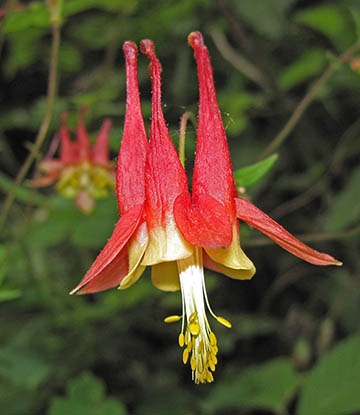
Eastern Columbine
The eastern columbine (Aquilegia canadensis) is a perennial wildflower native to much of the eastern U.S. It often grows in rocky or sandy soils and in open woods. Columbines are perennials, but will also readily self-seed if the conditions are favorable. Their self-seeding ability means that they will often form clumps or loose drifts of…
-
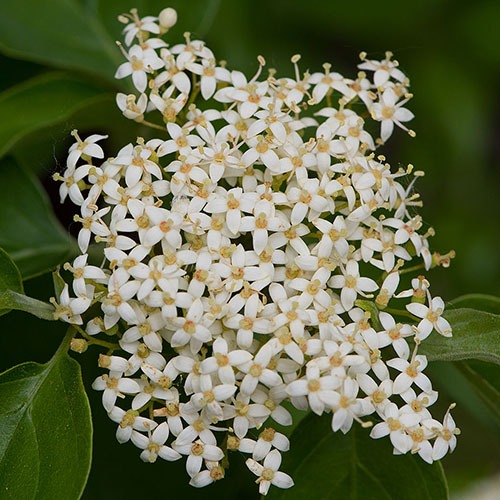
Rough-leafed Dogwood
The rough-leafed dogwood (Cornus drummondii) is one of five species of dogwoods native to Kentucky. It can be found growing in thickets, open woodlands, edges of fields or creeks, and savannahs. Rough-leafed dogwoods can grow 15-20 feet tall and will often send up new shoots to form a multi-trunk shrub or thicket. As one might…
-
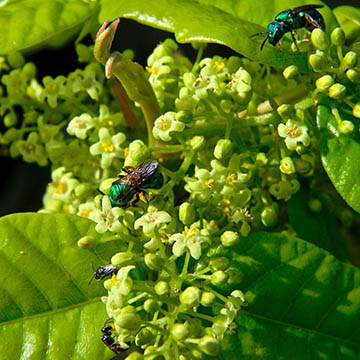
Poison Ivy
Poison ivy (Toxicodendron radicans) is a common and much-hated native plant that can be found throughout the eastern half of the continent. It seems to grow pretty much anywhere and the allergic reactions it can cause are infamous. However, no matter how much we may hate it, poison ivy plays an important role in the…
-
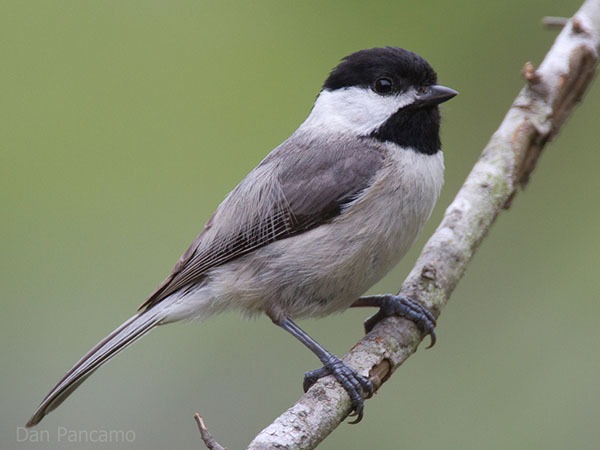
Plant at least 70% of yard in native plants to increase songbird nesting success
Carolina chickadees are not able to successfully raise enough young to maintain their population numbers in areas where less than 70% of the plants are native species, according to new research from the University of Delaware. The study was conducted in backyards throughout Washington, D.C. The research looked at the relationship between Carolina chickadee nesting…
-
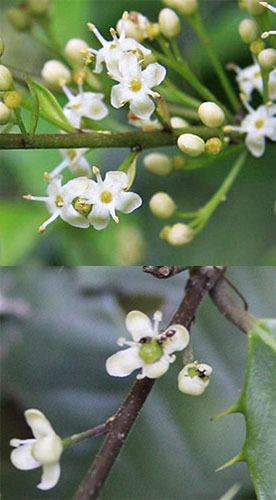
American Holly
The American holly (Ilex opaca) is a native evergreen tree that grows throughout much of the eastern half of the country. In the wild, it can be found growing in rich, well-drained (but not super dry), slightly acidic soils. It prefers mostly sunny areas, but can be found growing as an understory tree in semi-open…
-
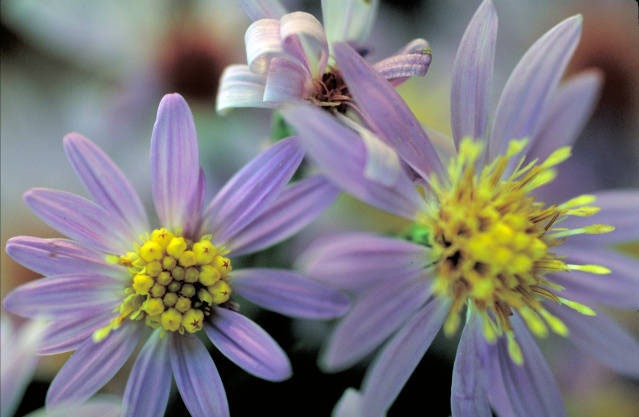
Short’s Aster
Short’s aster (Symphyotrichum shortii) is a native wildflower that can be found in Kentucky, Tennessee, and most of the surrounding states. It’ll grow to about 3 feet tall. The upper portion of the stem and upper leaves have tiny, stiff hairs that give the plant a slightly rough feeling. It often grows in relatively dry,…
-
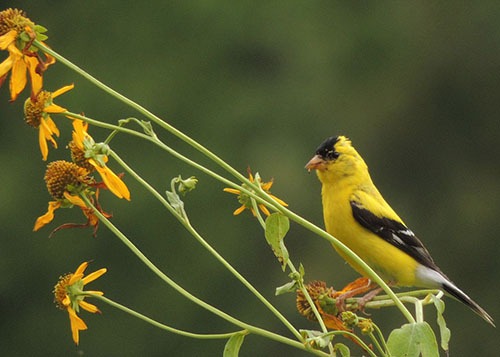
Leave Seed Heads for Songbirds
As we begin the transition from summer to fall, many of our summer flowers are starting to go to seed. It is often tempting to cut off the seed heads in an attempt to make our gardens looks neater, especially if you don’t want the plants spreading anymore. However, songbirds love to eat the seeds…
-
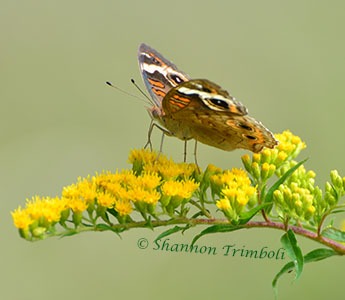
Goldenrods
Goldenrods (Solidago spp.) are in the aster family – the same family as daisies, sunflowers, and asters. The USDA Plants Database lists 33 species of goldenrods that are native to Kentucky. Two of those species, the white-haired goldenrod (Solidago albopilosa) and Short’s goldenrod (Solidago shortii) are federally endangered. The giant goldenrod (Solidago gigantea) is Kentucky’s…
-

Cup plant
Cup plant (Silphium perfoliatum) is a tall wildflower that is native to Kentucky and much of the eastern U.S. It commonly grows 4-6 feet tall and has been known to grow even taller in ideal conditions. Once established, cup plant spreads both by seeds and by underground rhizomes that form clones. In favorable conditions, it…
-
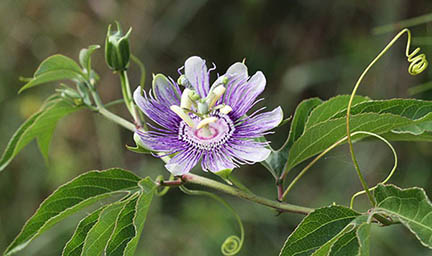
Passionflower
Passionflower (Passiflora incarnate) is a deciduous vine native to most of the eastern U.S. and a few states west of the Mississippi River. It is often found trailing along the ground or climbing up nearby vegetation in sunny areas. The passionflower is the state wildflower of Tennessee. In Kentucky, passionflower blooms from May through August. The…
-

Plant Taller Milkweed Species for Monarchs
A recently published study by researchers at the University of Kentucky compared monarch butterfly usage of seven species of milkweed in small, urban garden settings. The two-year study, found more monarch caterpillars and eggs on the taller milkweed species (swamp milkweed, common milkweed, showy milkweed, and Mexican whorled milkweed), compared to the shorter milkweed species in…
-
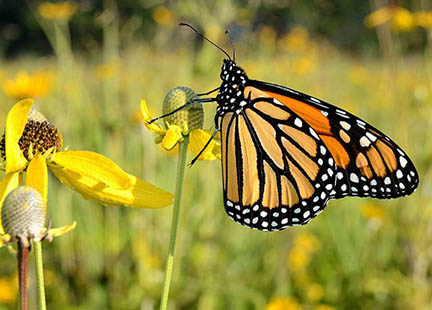
Grey-headed Coneflower
The grey-headed coneflower (Ratibida pinnata) is a perennial wildflower native to most of the eastern U.S. It grows naturally in dry prairies and barrens. Grey-headed coneflowers have also become a favorite addition to prairie restoration areas, pollinator plantings, and wildflower gardens. Another common name for the grey-headed coneflower is the yellow coneflower. Grey-headed coneflowers can…
-
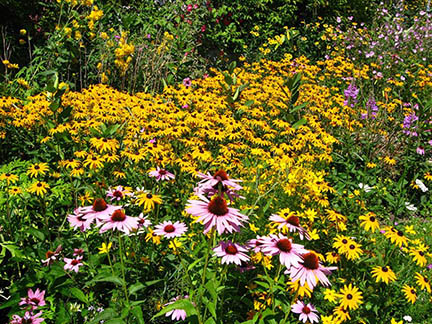
Incorporate Native Plants into Your Landscape
Incorporating native plants into your landscape can be a simple and effective way to attract pollinators and wildlife to your yard. While you can choose to plant only natives, you can also choose to have a mix of native and non-native plants. It doesn’t have to be all or nothing. Below are a few reasons…
-
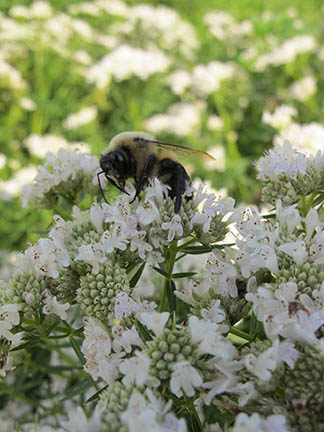
Slender Mountain Mint
Slender mountain mint (Pycnanthemum tenuifolium) is one of nine species of mountain mints native to Kentucky. Mountain mints are in the mint family, but despite their name are not restricted to mountainous regions. They can be found growing throughout the state and many of the surrounding states. Slender mountain mint, specifically, is native to much…
-
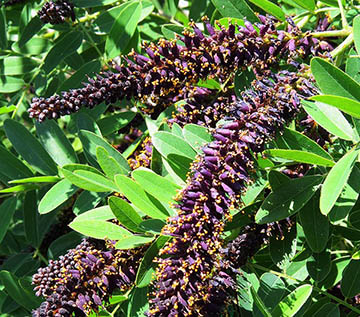
False Indigo Bush
False indigo bush (Amorpha fruticosa) is a member of the legume or pea family. It is native to Kentucky and much of the eastern U.S. The leaves look very similar to the leaves of black locust (Robinia pseudoacacia) which is also in the pea family. False indigo bush typically grows 6-10 feet tall and has…
-
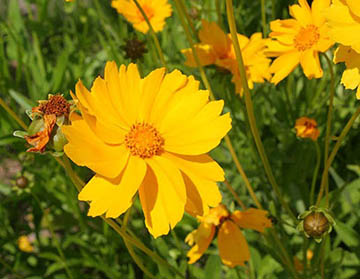
Lance-Leaf Coreopsis
Lance-leaf coreopsis (Coreopsis lanceolata) is native to most of the continental U.S. It is one of eight species of coreopsis native to Kentucky and is the species that is the most common. Other names for lance-leaf coreopsis include tickseed and sand coreopsis. The name tickseed comes from the fact that its dark brown seeds resemble…
-

Swamp Milkweed or Rose Milkweed
Swamp milkweed, also called rose milkweed, (Asclepias incarnata) is one of 13 milkweed species native to Kentucky. It can be from 3-6 feet tall, but 3-4 feet is more common. Swamp milkweed has clusters of pink flowers that bloom from June through August, depending on the plant and whether it was mowed or grazed before…
-
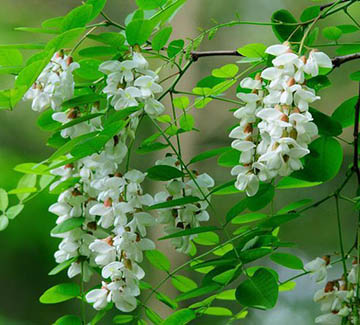
Black Locusts
Black locusts (Robinia pseudoacacia) are tall trees native to the Appalachian region and parts of the Ozarks, but they have been widely planted across the U.S. and in parts of Canada. They have even been imported to other parts of the world where they are often planted as ornamentals. Black locusts grow very quickly but…
-
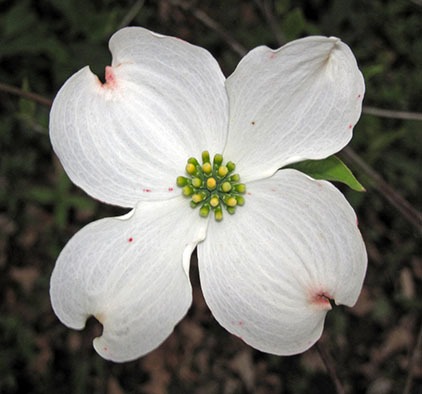
Flowering Dogwood
The flowering dogwood (Cornus florida) is a small tree or tall shrub native to much of the eastern U.S. It is probably the most familiar of our native dogwoods and is the one that most people are referring to when they say “dogwood.” In addition to growing wild in our woods, the flowering dogwood is…
-

Common Blue Violet
There are over 20 different species of violets native to Kentucky and the surrounding states. Probably the most common of these species is the common blue violet (Viola sororia). The common blue violet grows in a wide range of habitats including meadows, parks, open woods, and yards. It has heart-shaped leaves and blue to purple…
-
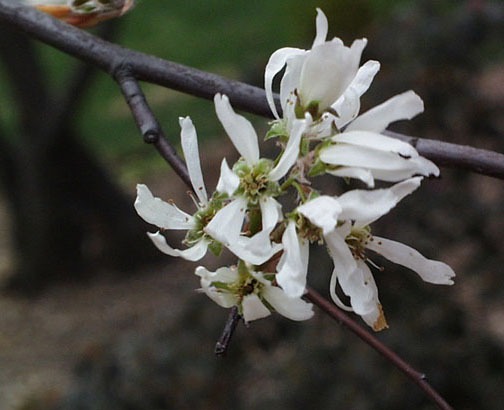
Serviceberry
Serviceberries (Amelanchier spp.) are small trees or large shrubs that typically grow to around 10-15 feet tall, but occasionally can be taller. There are multiple different species of serviceberry throughout the U.S. and Canada. In fact, every state except for Hawaii has a native species of serviceberry. In Kentucky, our two most common native species…
-
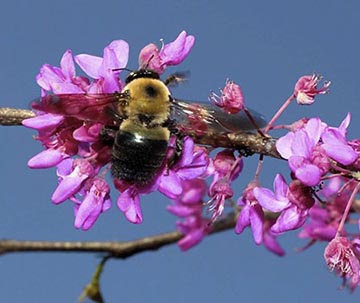
Eastern Redbud
The eastern redbud (Cercis canadensis) is a small tree or tall shrub that is native to much of the eastern U.S. In the early spring, redbuds produce clusters of pink flowers. Redbuds bloom before the leaves have started to appear on most trees and their pretty pink flowers can often be spotted in the understory…
-
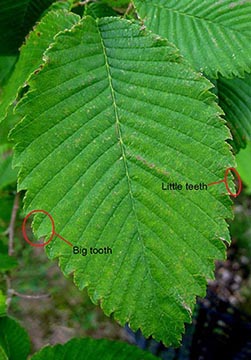
Elms
Elms are deciduous trees and many species can be found in different parts of the world. In Kentucky, we have four species of native elms – the American elm (Ulmus americana), slippery elm (U. rubra), winged elm (U. alata), and rock elm (U. thomasii). Other elms have been introduced as ornamentals and the Siberian elm…
-
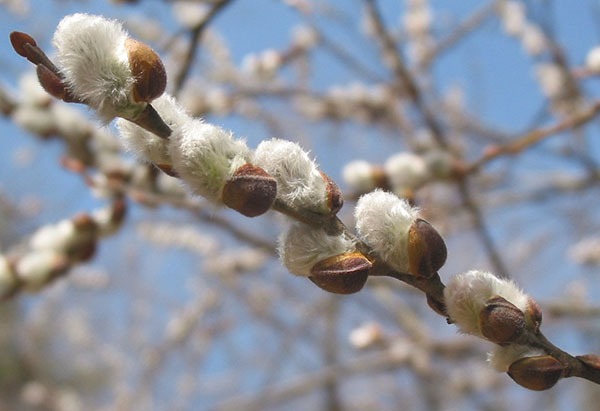
Pussy Willow
Different species of willow can be found throughout much of the Northern Hemisphere. There are several species native to Kentucky and several exotic species can be found growing as ornamentals. The pussy willow (Salix discolor) is perhaps our most familiar native willow, even though it is not Kentucky’s most common native willow. In addition to…
-
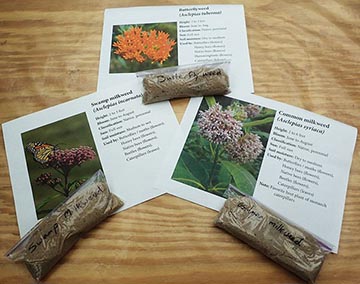
Planting Native Seeds
in Take ActionWhen it comes to planting native seeds for pollinators, just scattering some seeds in a flower bed may not be enough. Some wildflowers will sprout like that, but the seeds of many species need to be treated before they will germinate. Those treatments may include going through the digestive tract of an animal to remove…
-
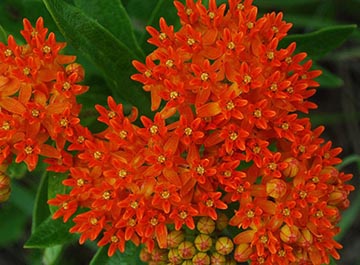
Butterfly Milkweed
Butterfly milkweed (Asclepias tuberosa) is one of several milkweed species native to Kentucky and the eastern U.S. It is a perennial and relatively easy to identify because it is our only orange milkweed. Unlike other milkweed species, this one lacks the characteristic milky sap. Butterfly milkweed can grow up to three feet tall and have…
-
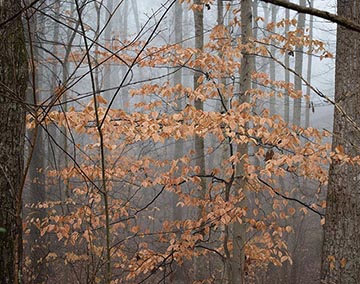
American Beech
The American beech (Fagus grandifolia) is a tall, deciduous tree that is native to the eastern U.S. It is the only beech tree native to North America. Other beech species are native to Europe and are sometimes planted as ornamentals. However, when most people in the eastern U.S. talk about beeches they are referring to…
-
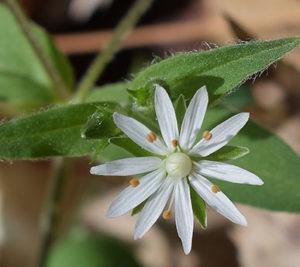
Chickweeds
Several species of chickweeds (Stellaria spp.) can be found in Kentucky and the surrounding states. The most common species are common chickweed (S. media) and star chickweed (S. pubera). Common chickweed is an exotic introduced from Europe. It is commonly found in yards and other disturbed locations. In Kentucky, it is considered a severe invasive…
-
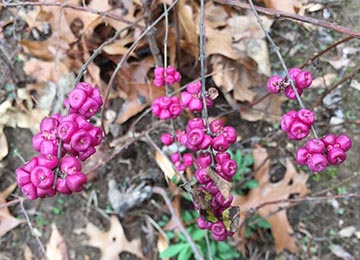
Coralberry
Coralberry (Symphoricarpos orbiculatus) is a deciduous shrub that is native to most of the eastern half of the U.S. It typically grows 2-4 feet tall and is most commonly found in semi-open woods. Coralberry blooms during the summer, but the flowers are not very showy and are often overlooked. It produces pinkish to purplish berries…
-
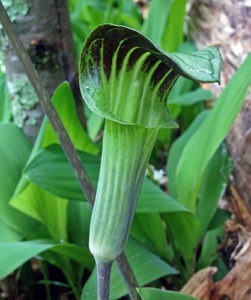
Jack-in-the-Pulpit and Its Tricky Pollination Method
Jack-in-the-pulpits (Arisaema triphyllum) are native to much of the eastern two-thirds of the U.S. and grow in moist, rich woodlands. In Kentucky, they typically bloom in April and May. Their flowers aren’t very showy compared to some of our other spring wildflowers, but they have a unique shape. They also have some very interesting life…
-
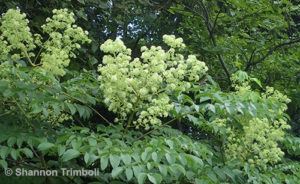
Devil’s Walking Stick
Devil’s walking stick (Aralia spinosa) is a small tree or tall shrub that is native to the eastern U.S. It is often found growing along the edges of forests or in open woodlands. Devil’s walking stick can be a very important plant for honey bees, native bees, and butterflies. From approximately mid-July to mid-August, devil’s…
-
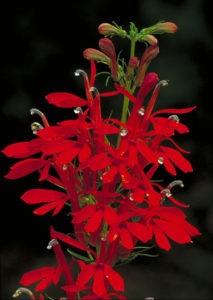
Cardinal Flower: Attractive to Hummingbirds, but not Cardinals
The cardinal flower (Lobelia cardinalis) is a native Kentucky wildflower that grows in moist to wet woods and stream banks. Typically it only grows 2-4 feet tall, but it can grow as tall as 6 feet if it is in really rich, wet soil. Cardinal flower does not do well in dry conditions and will…
-
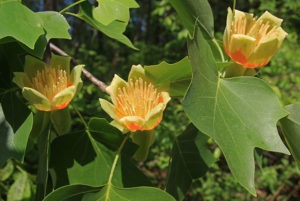
Tulip poplars – A source of abundant nectar and pollen for Kentucky pollinators
The tulip poplar (Liriodendron tulipifera), a.k.a. yellow poplar, tulip tree, or tulip magnolia, is a common and important part of our forests. Despite the name, tulip poplars aren’t poplars. Instead, the tulip poplar is in the magnolia family and is part of a genus that only has two species – the other species is found…
-
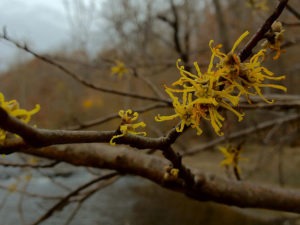
American Witch Hazel: The Last Flowers of the Year
It’s the time of year when almost everything has stopped blooming. If I look hard enough, I might be able to find a few clover, dandelion, or smartweed blossoms left. The crazy cold, then warm weather has also tricked our lilac into putting out a few blooms. However, for the most part, the flowering season…
-
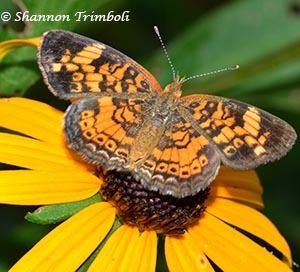
Black-eyed Susan: A favorite nectar source for butterflies
The black-eyed susan (Rudbeckia hirta) is a native wildflower that belongs to a group of flowers called the coneflowers. The coneflowers include popular wildflowers like the black-eyed susans, brown-eyed susans, purple coneflower, grey-headed coneflower, and many others. Coneflowers are semi-drought tolerant and bloom during the summer. In Kentucky, Black-eyed susans bloom from June to September. What…
